Reflection 7 – The Lord of the Rings 3 The Return of the King
Reaction Paper:
Movie Flick: The Lord of the Rings 3 The Return of the King
In rode the Lord of the A great black shape against the fires beyond he loomed up, grown to a vast menace of despair. In rode the Lord of the Nazgûl, under the archway that no enemy ever yet had passed, and all fled before his face.
All save one. There waiting, silent and still in the space before the Gate, sat Gandalf upon Shadowfax: Shadowfax who alone among the free horses of the earth endured the terror, unmoving, steadfast as a graven image in Rath Dínen.
“You cannot enter here,” said Gandalf, and the huge shadow halted. “Go back to the abyss prepared for you! Go back! Fall into the nothingness that awaits you and your Master. Go!”
The Black Rider flung back his hood, and behold! He had a kingly crown; and yet upon no head visible was it set. The red fires shone between it and the mantled shoulders vast and dark. From a mouth unseen there came a deadly laughter. “Old fool!” he said. “Old fool! This is my hour. Do you not know Death when you see it? Die now and curse in vain!” And with that he lifted high his sword and flames ran down the blade.
And in that very moment, away behind in some courtyard of the city, a cock crowed. Shrill and clear he crowed, recking nothing of war nor of wizardry, welcoming only the morning that in the sky far above the shadows of death was coming with the dawn.
And as if in answer there came from far away another note. Horns, horns, horns, in dark Mindolluin’s sides they dimly echoed. Great horns of the north wildly blowing. Rohan had come at last.”
- “Out of doubt, out of dark to the day’s rising I came singing into the sun, sword unsheathing. To hope’s end I rode and to heart’s breaking: Now for wrath, now for ruin and a red nightfall! “Who was the greatest king of Arnor in the centuries between Isildur and Aragorn II Elessar, and why?
Although Tolkien failed to provide his usual substantive amount of detail on the Kings of Arnor and Arthedain, there’s enough for me to nominate one in particular:
King Araphor of Arthedain, who ruled the largest of the Dúnedain kingdoms of Arnor for 180 years. He ascended to the throne only because his father, King Arveleg I, was slain by the Witch-king of Angmar’s forces.
“Rivendell was besieged. A great host came out of Angmar in 1409, and crossing the river entered Cardolan and surrounded Weathertop. The Dúnedain were defeated and Arveleg was slain. The Tower of Amon Sûl was burned and razed; but the palantír was saved and carried back in retreat to Fornost. Rhudaur was occupied by evil Men subject to Angmar, and the Dúnedain that remained there were slain or fled west. Cardolan was ravaged.Araphor son of Arveleg was not yet full-grown, but he was valiant, and with aid from Círdan he repelled the enemy from Fornost and the North Downs.”
King Araphor is one of the only Dúnedain kings to claim a victory over the Lord of the Nazgûl’s forces in combat.
Had it not been for young King Araphor’s heroics, assisted by elves from the Grey Havens, the Kingdom of Arthedain might well have been overrun and the Dúnedain nearly exterminated over 600 years before those events actually happened.
Under those circumstances it would have been even harder for the line of Isildur to have remained unbroken. Additionally, it might have possibly led to the extinction or enslavement of the hobbit communities that were just beginning to establish themselves in Arthedain at that period of history.
This is an arguable point, and undoubtedly a woolly answer, but I should say that Valandil, the fourth son of Isildur and High King of Arnor sounds in good stead – accounting for the facts that Arnor was undoubtedly at its zenith before the battle on the Dagorlad plains with the Noldorin king Gil-galad, and also that after the battle, Arnor included the a large chunk, if not the whole region of Eriador, and was yet undivided into its successor states of Arthedain, Cardolan and Rhudaur (in order of importance, taking into account the events that befell this region following Angmar’s ravages). Valandil was undoubtedly young when he came into kingship, but he seemed to have a long and peaceful reign, one that wasn’t marred by any conflicts, and had the longest period of ruling, followed by Aragorn Elessar. He must have been entrusted with the task of stitching up the fabric of a kingdom which had lost several good men (and princes and Elf-friends) in the War of the Last Alliance and by the looks of it, doesn’t seem to have done a bad job.
However, if the answer you seek has accounts of bravery, bloody conquest and resourcefulness, then I’m biased towards the latter half in the line of kings who ruled Arthedain – specifically:
- Argeleb I: 7th king of Arnor. Supposed to be a doughty warrior, and had claimed kingship over all of Arnor (or what was left of it, seeing that Rhudaur was under the dominion of the witch king) – and it was accepted. Fortified the hills of Weathertop to good effect, but was unfortunately cut down by men from Rhudaur under the Witch King
- Arveleg I: Argeleb’s son, who had the trying task of driving away the witch king’s forces who had killed his father. Successfully maintained watch over the Great Eastern Road for over 50 years, and was able to push back Angmar’s territories (I guess the ar-prefix is common among this line and it stands for royal, but veleg stands for mighty in Sindarin)
- Araphor: The next in line – pushed back the forces of the witch king with aid from Lindon (i.e., Cirdan’s..forces(?)) – and had a long (seemingly untroubled) reign of 180 years.
- Araval: 13th in line of the High Kings, Tolkien dropped hints that he was a successful diplomat and warrior, pushing back the Witch King and winning important victories with the aid of Imladris. He bravely attempted recolonizing Cardolan after the plague, but the weights of the Witch King foiled his efforts
- Araphant: Araval’s son – mentioned here since he forged a marriage alliance with Gondor through his son – and held off, with last gasps, the attacks of Angmar
But, if you seek an answer that has bad-assery involved (and a king who isn’t a descendant of Isildur, but as effective a High King as any), then I present to you, without any further ado, to this..man-wraith-being:
The Witch King of Angmar had – strength, sorcery and the support of his master, and mastery over the other Ringwraiths. He started an open war with the fractious Northern kingdoms, and managed to take over Rhudaur, and colonize Cardolan with wights under his command. He staved off attempts to subdue his forces for a period spanning nearly 700 years, against the armies of men and powerful elven-lords from Imladris and Lindon. He had successfully managed to snuff out the line of the high kings in the north, culminating in his capture of Fornost Erain, which he ruled over for a short span, before his utter defeat at the Battle of Fornost on the plains of Annuminas – but at the hands of reinforcements from Gondor and the mustered strength of the remaining elves and hard-pressed forces of Arnor. Not to mention, his appearance on the battlefield quelled joyful hearts and even Glorfindel was forced to take note of the situation and stop Earnur from his mad rush to his death (I know I’m exaggerating a bit, but ah well)
He continued being a thorn in the side of Gondor for many years after, but, that’s not quite related to the subject of discussion now, is it?
2. “It is not our part to master all the tides of the world, but to do what is in us for the succour of those years wherein we are set, uprooting the evil in the fields that we know, so that those who live after may have clean earth to till. What weather they shall have is not ours to rule.” What was the political organization of the Shire prior to and after the renewal of the High Kingship of Arnor and Gondor under Aragor II Elessar?
It’s a constitutional monarchy.
The hobbits of the Shire considered themselves to be a part of the Kingdom of Arnor and loyal to its monarchs, but when the kingdom fell they chose a Thain to rule them and “hold the authority of the King that was gone”.
The first Thain was Bucca of the Marish, elected in TA 1979. His family, the Oldbucks, held the office for twelve generations until TA 2340, when Gorhendad Oldbuck founded the March of Buckland (changing his name to Brandybuck). The office of thain then passed to the Took family, where it remained for at least 21 generations. Peregrin Took (Pippin) was the 32nd Thain and his son Faramir became the 33rd Thain in FA 63.
The role of Thain was that of a hereditary monarch, though by the time of the War of the Ring their powers were – like those of the British monarchy – largely ceremonial and symbolic. The Thain commanded the Shire’s army, such as it was, and also had the right to summon a Shire-moot. From the name that would be an assembly or Parliament; but Tolkien tells us that it was summoned only in emergencies, and since it had been centuries since the Shire faced an emergency, the Moot was more or less a forgotten custom.
It is possible that the Moot was the legislative body for the Shire, able to pass laws as needed – but in fact it seems that the hobbits simply preserved the old laws of the Kingdom of Arnor unmodified, referring to them as ‘The Rules’.
The Shire had no standing army, but was defended by a militia. In times of emergency the Thain could summon a Shire-muster, calling all able-bodied hobbits-in-arms to gather under his leadership. By the time of the Lord of the Rings that had not happened in over two centuries, the last occasion being in TA 2747.
With the role of Thain becoming merely a ceremonial one, real power in the Shire belonged to the elected Mayor. Nominally he was only the Mayor of Michel Delving, the Shire’s largest town, but the Mayor also held ex officio the roles of Postmaster and First Shirriff, whose authority extended to the whole Shire. Colloquially, the Mayor was thus referred to as ‘Mayor of the Shire’. Only two holders of the office are named, Will Whitfoot and Sam Gamgee (who was elected seven times in succession).
Elections for mayor were held every seven years, at the Free Fair on the White Downs near Michel Delving. Tolkien doesn’t say what the franchise was, so we don’t know whether hobbits had universal suffrage or whether they restricted the vote to wealthy male landowners only.
The mayor’s primary duty, we are told, was ‘presiding at banquets’. I assume there were a few other minor administrative duties as well. The Shire’s postal service was its most important (and virtually only) public utility, and the Mayor was also the Postmaster. Hobbits frequently corresponded with each other, and there was both a regular post and a ‘Quick Post’ sent by special messengers.
The other duty of the Mayor was to be First Shirriff, head of the Watch. This was the Shire’s law enforcement agency. The word ‘Shirriff’ is of course an alternative spelling of ‘sheriff’, which itself is derived from the term ‘shire-reeve’. The Shire was divided into four quarters, the Farthings, and each Farthing had three Shirriffs appointed to keep order. We are told that hobbits were generally so law-abiding that the main job of the Shirriffs was catching stray animals and returning them to their owners.
In addition, the Watch included the Bounders, who were in effect the Shire’s border patrol guards. Their number varied depending on need, and at the time of the War of the Ring it was high due to the unrest beyond the borders.
We aren’t told how the Shiriffs were funded, or even if they were paid a salary at all. Assuming they were, that does imply some sort of taxation system in the Shire, though obviously extremely minimal. The books contain no details, however.
The Shire has lawyers – including the notable partnership Grubb, Grubb and Burrowes – and complex laws governing inheritances and wills, so we can assume it also has law courts; but these are not mentioned in the books.
We aren’t told who maintains the roads and bridges of the Shire. There is no mention in the books of travelling hobbits ever having to pay tolls. Even the ferry over the River Brandywine appears to be unmanned and free for anyone to come along and use. Since roads don’t maintain themselves, we can therefore assume this must also be a State function. In pre-industrial England, this task was passed off to the local inhabitants, who were normally obliged (on a parish-by-parish level) to provide so many man-hours per year of unpaid road maintenance. I can imagine the hobbits having a similar arrangement.
Finally, hobbit society seems to be quite clan-based. Powerful families own land and manage their own affairs, without much reference to the state or the law. The Brandybucks of Buckland, for example, seem to be virtually a semi-independent realm of their own, with other petty landowners in the district acknowledging the leadership of the Master of Buckland. The Tooks likewise have autonomy in their own lands. We’re told that other hobbit clans once had similar levels of power in their own lands, but over time most families have become more dispersed and lost influence.
Even so, when Frodo returns to the Shire near the end of Lord of the Rings and hears that Lotho Sackville-Baggins has been causing trouble, his immediate reaction is that “the family” should “deal with him and put him in his place”. In other words, his first assumption is that it is a matter for the Baggins family, not the Shire authorities, to handle internal clan matters such as one of the family setting himself up as dictator.
After the overthrow of the Sackville-Baggins dictatorship, the Shire returns to its previous form of government. The only difference is that the Shire is once again an autonomous part of the Kingdom of Arnor rather than an independent state; but this does not seem to have any practical effect on its internal affairs. King Elessar appoints the Thain and Mayor as Councillors of the North Kingdom, but confirms their right to self-government.
When originally founded, The Shire was ruled by the heads of the various large families of each Farthing, as they arrived. I can’t recall the order, but the Oldbucks, later the Brandybucks (when they crossed the Baranduin into what became known as Buckland), were the largest clan in the East Farthing, and the Tooks in the North Farthing.
There is no one family listed as titular for the West and South Farthings, but the West Farthing is said to be the wealthiest of the Farthings, and is home to the Mayor of Michel-Delving (largest town in the shire – its urban center, as it were).
The Shire was a gift from the King of Arnor (can’t remember to whom, or even from whom, and my ego won’t yet permit me to look it up – I’ll edit this later to include it. I want to say it was to a Stoot, Took or Oldbuck, though)
When Arvedui, of Arnor/Arthedain, fell, a hereditary Thain was appointed to hold the power of the King. This was held by the Oldbucks, Bucca of the Marish being the first (and then eleven others) until it was passed to the Tooks, where it remained (eventually being held by Peregrin Took).
After the re-establishment of the reunited kingdoms of Arnor and Gondor, Elessar gave The Shire the Westmarch, and Buckland, both Marches ruled by a Marshall or Warden (one of Samwise Gamgee’s daughters would marry Fastred of Greenholm, Warden of the Westmarch). Meriodoc Brandybuck would become the first Warden of the March of Buckland).
3. “It is the way of my people to use light words at such times and say less than they mean. We fear to say too much. It robs us of the right words when a jest is out of place.” Why didn’t the Chieftains of the Dúnedain before Aragorn II claim the throne of Gondor?
The claiming of the reunited throne of Arnor and Gondor was driven by the geopolitical realities of Middle Earth rather than whether the shards of Narsil were reforged into Andúril. Military victory over Sauron was a necessary precursor to political reunification.
The heirs of Isildur (Chieftains of the Dúnedain) before Aragorn II could not hope to reunite the North and South Kingdoms for several reasons:
1) The existential threat to Gondor posed by the lord of Mordor.
2) The non-existential but significant threats facing the former territories of Arnor — and in particular the Chieftains of the Dúnedain — due to the depredations of the orcs of the Misty Mountains and other vassals, minions and spies of Sauron.
3) The growing threat posed to Rohan and eastern Enedwaith (which separated the North and South Kingdoms) posed by Saruman’s machinations against King Théoden.
In the decades before the War of the Ring, the Chieftains of the Dúnedain lacked the capability to nullify any of these threats. In fact, both Rohan and Gondor were severely challenged merely attempting to repel encroachments against their borders and peoples. At this time, the public pronouncement of the existence of a legitimate Heir of Isildur would merely have resulted in Sauron launching waves of assassins against him. Numerous Chieftains of the Dúnedain had been slain by either orcs or wolves/wargs upon discovery by Sauron’s agents (including Arathorn I, Arador and Arathorn II).
Happily, during the Chieftainship of Aragorn II all of the necessary ingredients came together enabling him to terminate Sauron’s existential threat to Gondor as well as relieving incidental threats against Rohan and Rhudaur (eastern Arnor). By far the most important aspect of this was the discovery of Sauron’s Ruling Ring which offered the only viable prospect of completely destroying Sauron. Other ingredients included:
1) The White Council driving Sauron from Dol Guldur (relieving pressure against Lothlórien and northeastern Rohan
2) The death of the dragon Smaug which removed a massive potential threat to eastern Arnor or Gondor
3) The tripartite union between the elves of Mirkwood, the men of Dale and the dwarves of Erebor
4) Knowledge of the Paths of the Dead and the potential utility of the Dead men of the White Mountains
With these geopolitical elements in place … and with a tremendous dollop of luck and heroic actions by all the members of the Fellowship of the Ring, Lady Galadriel and warriors of both Rohan and Gondor … it was possible to remove the threat of Sauron from Middle Earth. In the event, Narsil/Andúril played a relatively minor role.
Only with Sauron dispatched, Saruman de-fanged and both of their armies dispersed could the North and South Kingdoms be reunited and the Heir of Isildur claim the throne without being swiftly assassinated.
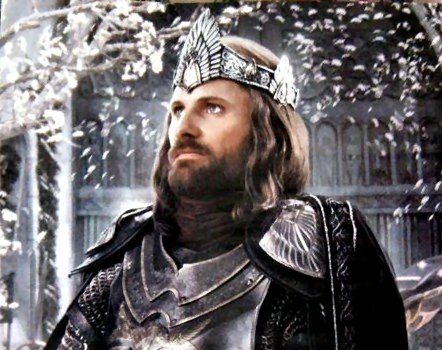 4. “Here was one with an air of high nobility such as Aragorn at times revealed, less high perhaps, yet also less incalculable and remote: one of the Kings of Men born into a later time, but touched with the wisdom and sadness of the Eldar Race. He knew now why Beregond spoke his name with love. He was a captain that men would follow, that he would follow, even under the shadow of the black wings.” Why did Aragorn use the Palantir to talk to Sauron?
4. “Here was one with an air of high nobility such as Aragorn at times revealed, less high perhaps, yet also less incalculable and remote: one of the Kings of Men born into a later time, but touched with the wisdom and sadness of the Eldar Race. He knew now why Beregond spoke his name with love. He was a captain that men would follow, that he would follow, even under the shadow of the black wings.” Why did Aragorn use the Palantir to talk to Sauron?
Aragorn had several purposes.
- To show Sauron that an heir of Isildur lived and wielded Narsil re-forged.
- To wrest control of the stone from Sauron in order to gather intelligence.
- Through both these actions to alarm Sauron, joggle his elbow in a sense.
Aragorn states that he spoke “no word to him”
From The Return of the King The Passing of the Grey Company
Together they went back into the Burg; yet for some time Aragorn sat silent at the table in the hall, and the others waited for him to speak. ‘Come!’ said Legolas at last. ‘Speak and be comforted, and shake off the shadow! What has happened since we came back to this grim place in the grey morning?’ ‘A struggle somewhat grimmer for my part than the battle of the Hornburg,’ answered Aragorn. ‘I have looked in the Stone of Orthanc, my friends.’
‘You have looked in that accursed stone of wizardry!’ exclaimed Gimli with fear and astonishment in his face. ‘Did you say aught to – him? Even Gandalf feared that encounter.’
‘You forget to whom you speak,’ said Aragorn sternly, and his eyes glinted. ‘What do you fear that I should say to him? Did I not openly proclaim my title before the doors of Edoras? Nay, Gimli,’ he said in a softer voice, and the grimness left his face, and he looked like one who has laboured in sleepless pain for many nights. ‘Nay, my friends, I am the lawful master of the Stone, and I had both the right and the strength to use it, or so I judged. The right cannot be doubted. The strength was enough – barely.’ He drew a deep breath. ‘It was a bitter struggle, and the weariness is slow to pass. I spoke no word to him, and in the end I wrenched the Stone to my own will. That alone he will find hard to endure. And he beheld me. Yes, Master Gimli, he saw me, but in other guise than you see me here. If that will aid him, then I have done ill. But I do not think so. To know that I lived and walked the earth was a blow to his heart, I deem; for he knew it not till now. The eyes in Orthanc did not see through the armour of The´oden; but Sauron has not forgotten Isildur and the sword of Elendil. Now in the very hour of his great designs the heir of Isildur and the Sword are revealed; for I showed the blade re-forged to him. He is not so mighty yet that he is above fear; nay, doubt ever gnaws him.’ ‘But he wields great dominion, nonetheless,’ said Gimli; ‘and now he will strike more swiftly.’
‘The hasty stroke goes oft astray,’ said Aragorn. ‘We must press our Enemy, and no longer wait upon him for the move. See my friends, when I had mastered the Stone, I learned many things. A grave peril I saw coming unlooked-for upon Gondor from the South that will draw off great strength from the defence of Minas Tirith. If it is not countered swiftly, I deem that the City will be lost ere ten days be gone.’ ‘Then lost it must be,’ said Gimli. ‘For what help is there to send thither, and how could it come there in time?’
‘I have no help to send, therefore I must go myself,’ said Aragorn. ‘But there is only one way through the mountains that will bring me to the coastlands before all is lost. That is the Paths of the Dead.’
This is an excellent answer and has chosen a very sufficient passage from the book, and I will try to supplement it. The book only talks about Aragorn using the palantir once, and when he used it; he did not verbally say anything. This instance is described in the passage included.
Like so many things in Tolkein’s universe, the heritage, lineage, and history of people and objects such as Aragorn, Sauron, and the palantiri are of utmost importance. Heritage has a much greater role to play in Middle-Earth than it seems to have today, and one’s heritage is enough to claim lordship over another. Take Aragorn and Boromir for example: one has been a wayward Ranger for most of his life, and one has become known as “the greatest man in Gondor.” Who seems more deserving to be King, or at least Steward? Yet because of Aragorns lineage, by the end Boromir calls Aragorn “my King” (almost brings me to tears, considering the circumstances). Let’s dive right into the history of these people and objects now.
First of all, we all know that Aragorn is directly descended from a long line of fathers who carried the lineage of the majesty of Numenor. The lineage begins with Elrond’s brother, Elros, who chose the gift of men (i.e. death). Elros became Tar-Minyatur, the first king of Numenor, and from him Aragorn is directly descended (though 6,428 years lie between the crowing of Tar-Minyatur and the crowning of Aragorn). This is the lineage that Aragorn claims in the books.
As for the palantiri, they are absolutely ancient, made by the Noldor, an ancient and noble race of elves (Galadriel is one of these). They were made many thousands of years before they were given to the kingdom of Numenor. They were used on the island, but seven were brought to Middle-Earth before Numenor was destroyed. Of these seven, one was in Orthanc, one in Minas Tirith, one in Osgiliath, and one in Minas Ithil (which became Minas Morgul after the Nazgul defiled it). The other three were in the North Kingdom. Saruman obviously used the Orthanc stone, and Sauron used the Ithil-stone. Though the Orthanc stone, and palantiri in general, are seen as extremely dangerous in the movies, it was not always so, and for many thousands of years they were used responsibly. It was Sauron’s capture and use of the palantir that made them dangerous, because of his strong will and deception. However, Sauron could also be deceived by the palantiri, and in fact he was.
An interesting note about Sauron is the role he played in the downfall of Numenor. Back in those days, Sauron was able to change shape, so his appearance was not as obviously evil as it was in the Lord of the Rings. The Numenoreans colonized Middle-Earth and eventually felt threatened by Sauron, so they made war with him and captured him, taking him back to Numenor (that’s a long story short). While in Numenor, Sauron corrupted the kings until the one who captured him, the last king of Numenor, Ar-Pharazon (a douchebag), decided to assail the Undying Lands and to take the gift of immortality by force. As soon as he set foot on the shores, the world is changed and Numenor gets swallowed up by the sea. Sauron perishes in Numenor’s downfall and returns to Middle-Earth in spirit form, and has lost the power to change shape. Elendil, who has resisted Sauron’s corruption from the beginning, has fled Numenor and lands on the shores of Middle-Earth with the seven palantiri and his two sons, Isildur and Anarion.
Back to the event at hand: Aragorn using the palantiri. As you can see above, Aragorn is the owner of the palantiri, not Sauron. I provide the reasons that Aragorn has for using the palantir; however, in the movie, Aragorn specifically uses the palantir to distract Sauron from Frodo.
- In the book, Aragorn uses the palantir immediately after they obtain it from Orthanc. He does not have any information on the whereabouts of Frodo, and doesn’t even know if he’s still alive. No one has heard from Faramir, who is the only ally to have seen Frodo; in fact, Frodo is in Ithilien at this very moment.
- In the movies, Aragorn uses the stone after the Seige of Gondor and the Battle of Pelennor Fields. He uses it specifically to distract Sauron and cause him to move his thousands of Orcs to the Black Gate to battle the heir of Isildur. A lot of assuming is going on in both parties.
5. “Out of doubt, out of dark to the day’s rising I came singing into the sun, sword unsheathing. To hope’s end I rode and to heart’s breaking: Now for wrath, now for ruin and a red nightfall! “Who was the greatest King of Gondor in the centuries between Isildur and Aragorn II Elessar, and why?
Earnil II, 1945-2043
As a commander of Gondor’s southern army, he won two great victories over both Haradrim and Easterlings – Battle of Poros and Battle of the Camp, destroying the Wainrider threat once and for all. He then took over the throne, since the direct royal line died out fighting the Wainriders. As king of Gondor, he led an army north, defeating the Witch-king and vanquishing his armies, thus saving the Northern Dunedain (though too late to save Arnor). He then ruled for 93 years and died of old age. Unfortunately, his son Earnur did not inherit any of his father’s wisdom or power.
Another case could be made for Hyarmendacil I, under whom Gondor reached its greatest geographical extent ever, although this was still in the 1st millenium of 3rd Age, when Gondor’s enemies were comparatively weak.
(Gondor under Hyarmendacil I)
Since I’ve recently been reading up on the American Civil War, I’m inspired to nominate an out-of-left-field candidate: Eldacar, son of Valacar.
Normally I’d go with Hyarmendacil I who, much like the Roman Emperor Trajan, was a superb general who pushed Gondor’s boundaries to their greatest extent. But Eldacar’s exploits were equally heroic and far more important to the survival of Gondor as a kingdom.
Born the son of Valacar, the King of Gondor and Vidumavi (a princess of the land of Rhovanion), Eldacar’s birth name was Vinitharya. He was the first King of Gondor since Isildur and Anárion to have been born outside of Gondor’s borders. Eldacar was viewed with suspicion by many in Gondor because his mother was not of the race of Dúnedain and they feared her progeny would be short-lived, diminishing the majesty of Gondor’s ruling line.
As a result, Castamir, the Captain of Ships, later known as the Usurper, mobilized a number of like-minded rebels and launched a bloody civil war. Castamir deposed the young King Eldacar by besieging and burning much of the great city of Osgiliath. In doing so he destroyed the fabled Tower of the Dome and caused the great palantír to be lost in the waters of the River Anduin.
Despite being driven from Gondor’s principal city, Eldacar did not give in to despair. He eluded his enemies and regrouped his forces in southwestern Rhovanion, where numerous loyal Dúnedain swelled the ranks of his army, and awaited an opportunity.
Castamir the Usurper proved to be an evil tyrant who alienated the common people of Gondor and even many of his rebel followers. In addition to unnecessarily laying waste to much of Osgiliath, he cruelly put to death Eldacar’s young son Ornendil. Castamir’s only love was for Gondor’s fleets and he neglected the needs of Osgiliath and Minas Anor in favor of Pelargir, where he determined to move the king’s seat and proclaim the new capital.
After a decade of exile, Eldacar swept down from Rhovanion with a great army, “… and folk flocked to him from Calenardhon and Anórien and Ithilien.” The armies met at the Crossings of Erui where Eldacar personally slew Castamir in single combat and defeated the rebels.
While Eldacar’s reign witnessed a loss of territory in southern Gondor, he counteracted a terrible civil war and restored the legitimacy of Númenorean rule in Gondor. In a sense, Eldacar was like Abraham Lincoln, if Robert E. Lee had initially won the Civil War and driven Lincoln to the Western territories for ten years before storming back to defeat the Confederacy in the end. Dramatic stuff!
It would fall to Eldacar’s distant descendant Aragorn II Elessar to strike a damaging blow to the corsairs of Umbar in his guise as Thorongil, and a fatal blow by finally conquering Umbar and the surrounding regions in the Fourth Age, with King Éomer’s aid.
6. “His grief he will not forget; but it will not darken his heart, it will teach him wisdom.” Why did Denethor (Steward of Gondor) dislike Faramir? Why did Denethor try to kill Faramir but not check whether he was dead or not?
The most complete description of the relationship between Denethor, Boromir and Faramir comes from Appendix A of The Return of the King. This passage directly precedes The Tale of Aragorn and Arwen, and is preceded by a section detailing Aragorn’s time as “Thorongil.”
‘So time drew on to the War of the Ring, and the sons of Denethor grew to manhood. Boromir, five years the elder, beloved by his father, was like him in face and pride, but in little else. Rather he was a man after the sort of King Earnur of old, taking no wife and delighting chiefly in arms; fearless and strong, but caring little for lore, save the tales of old battles. Faramir the younger was like him in looks but otherwise in mind. He read the hearts of men as shrewdly as his father, but what he read moved him sooner to pity than to scorn. He was gentle in bearing, and a lover of lore and of music, and therefore by many in those days his courage was judged less than his brother’s. But it was not so, except that he did not seek glory in danger without a purpose. He welcomed Gandalf at such times as he came to the City, and he learned what he could from his wisdom; and in this as in many other matters he displeased his father.
‘Yet between the brothers there was great love, and had been since childhood, when Boromir was the helper and protector of Faramir. No jealousy or rivalry had arisen between them since, for their father’s favour or for the praise of men. It did not seem possible to Faramir that anyone in Gondor could rival Boromir, heir of Denethor, Captain of the White Tower; and of like mind was Boromir. Yet it proved otherwise at the test. But of all that befell these three in the War of the Ring much is said elsewhere.
The most complete description of the relationship between Denethor, Boromir and Faramir comes from Appendix A of The Return of the King. This passage directly precedes The Tale of Aragorn and Arwen, and is preceded by a section detailing Aragorn’s time as “Thorongil.”
‘So time drew on to the War of the Ring, and the sons of Denethor grew to manhood. Boromir, five years the elder, beloved by his father, was like him in face and pride, but in little else. Rather he was a man after the sort of King Earnur of old, taking no wife and delighting chiefly in arms; fearless and strong, but caring little for lore, save the tales of old battles. Faramir the younger was like him in looks but otherwise in mind. He read the hearts of men as shrewdly as his father, but what he read moved him sooner to pity than to scorn. He was gentle in bearing, and a lover of lore and of music, and therefore by many in those days his courage was judged less than his brother’s. But it was not so, except that he did not seek glory in danger without a purpose. He welcomed Gandalf at such times as he came to the City, and he learned what he could from his wisdom; and in this as in many other matters he displeased his father.
‘Yet between the brothers there was great love, and had been since childhood, when Boromir was the helper and protector of Faramir. No jealousy or rivalry had arisen between them since, for their father’s favour or for the praise of men. It did not seem possible to Faramir that anyone in Gondor could rival Boromir, heir of Denethor, Captain of the White Tower; and of like mind was Boromir. Yet it proved otherwise at the test. But of all that befell these three in the War of the Ring much is said elsewhere.
I think there may be a bit of tension, too, with the “opposites attract” notion and the Numenorean bloodlines:
[Denethor] is not as other men of this time, Pippin, and whatever be his descent from father to son, by some chance the blood of Westernesse runs nearly true in him, as it does in his other son, Faramir, and yet did not in Boromir whom he loved best.
Although Denethor told Boromir that the Stewards of Gondor had too much honor to ever ascend to the throne, he still wished that Gondor would remain under the Stewards.
I would have things as they were in all the days of my life, and in the days of my longfathers before me: to be the Lord of this city in peace, and leave my chair to a son after me who would be his own master and no wizard’s pupil.
Denethor was honorable and mighty, but also “strong-willed and proud” and pretty full of himself. The history tells that in his youth he was envious and resentful of Aragorn (in the guise of Thorongil… Denethor and Aragorn are almost the same age) to the point that Aragorn didn’t return to Minas Tirith after his victory at Umbar. Denethor likely felt then how special Aragorn was, and he saw the same traits in Faramir. Ironically, the very traits that made Denethor (and Faramir) kingly were the very traits he was afraid of, and so his love went to his elder son, who was more like the “Middle Men, of the twilight” Faramir refers to. To Denethor this probably seemed like a more true continuation of the Stewardship. By allying with Gandalf Denethor probably perceived that Faramir was helping Gandalf to wrest power from the Stewardship:
So! With your left hand thou wouldst use me for a little while as a shield against Mordor, and with the right bring up this Ranger of the North to supplant me.
To me, the story of Denethor is quite tragic and completely in character for Tolkein, who often showed how hubris can destroy the great.
Denethor was fully aware that Faramir was not yet dead. He was in a state of despair brought about by his use of the Palantir, his own pride, as well as grief and shame over Faramir’s injuries. He is convinced of Sauron’s imminent victory and further sees that even if Sauron is not victorious that his and his son’s reign will be over. Below are some relevant passages from The Return of the King.
“The Siege of Gondor”
‘Comfort me not with wizards!’ said Denethor. ‘The fool’s hope has failed. The Enemy has found it, and now his power waxes; he sees our very thoughts, and all we do is ruinous.
‘I sent my son forth, unthanked, unblessed, out into needless peril, and here he lies with poison in his veins. Nay, nay, whatever may now betide in war, my line too is ending, even the House of the Stewards has failed. Mean folk shall rule the last remnant of the Kings of Men, lurking in the hills until all are hounded out.’
“The Pyre of Denethor”
Then Gandalf seeing the madness that was on him feared that he had already done some evil deed, and he thrust forward, with Beregond and Pippin behind him, while Denethor gave back until he stood beside the table within. But there they found Faramir, still dreaming in his fever, lying upon the table.
Then Gandalf revealed the strength that lay hid in him, even as the light of his power was hidden under his grey mantle. He leaped up on to the faggots, and raising the sick man lightly he sprang down again, and bore him towards the door. But as he did so Faramir moaned and called on his father in his dream. Denethor started as one waking from a trance, and the flame died in his eyes, and he wept; and he said: ‘Do not take my son from me! He calls for me.’ ‘He calls,’ said Gandalf, ‘but you cannot come to him yet. For he must seek healing on the threshold of death, and maybe find it not. Whereas your part is to go out to the battle of your City, where maybe death awaits you. This you know in your heart.’
‘He will not wake again,’ said Denethor. ‘Battle is vain. Why should we wish to live longer? Why should we not go to death side by side?’
‘Authority is not given to you, Steward of Gondor, to order the hour of your death,’ answered Gandalf. ‘And only the heathen kings, under the domination of the Dark Power, did thus, slaying themselves in pride and despair, murdering their kin to ease their own death.’
‘Pride and despair!’ he cried. ‘Didst thou think that the eyes of the White Tower were blind? Nay, I have seen more than thou knowest, Grey Fool. For thy hope is but ignorance. Go then and labour in healing! Go forth and fight! Vanity. For a little space you may triumph on the field, for a day. Butagainst the Power that now arises there is no victory. To this City only the first finger of its hand has yet been stretched. All the East is moving. And even now the wind of thy hope cheats thee and wafts up Anduin a fleet with black sails. The West has failed. It is time for all to depart who would not be slaves.’
‘Such counsels will make the Enemy’s victory certain indeed,’ said Gandalf. ‘Hope on then!’ laughed Denethor. ‘Do I not know thee, Mithrandir? Thy hope is to rule in my stead, to stand behind every throne, north, south, or west. I have read thy mind and its policies.
So! With the left hand thou wouldst use me for a little while as a shield against Mordor, and with the right bring up this Ranger of the North to supplant me. ‘But I say to thee, Gandalf Mithrandir, I will not be thy tool! I am Steward of the House of Ana ´rion. I will not step down to be the dotard chamberlain of an upstart. Even were his claim proved to me, still he comes but of the line of Isildur. I will not bow to such a one, last of a ragged house long bereft of lordship and dignity.’
‘What then would you have,’ said Gandalf, ‘if your will could have its way?’
‘I would have things as they were in all the days of my life,’ answered Denethor, ‘and in the days of my longfathers before me: to be the Lord of this City in peace, and leave my chair to a son after me, who would be his own master and no wizard’s pupil. But if doom denies this to me, then I will have naught: neither life diminished, nor love halved, nor honour abated.’
7. “The rule of no realm is mine, neither of Gondor nor any other, great or small. But all worthy things that are in peril as the world now stands, those are my care. And for my part, I shall not wholly fail of my task, though Gondor should perish, if anything passes through this night that can still grow fair or bear fruit and flower again in days to come. For I also am a steward. Did you not know?” Why doesn’t Aragorn tell Theoden and his army that he is going to meet the Army of the Dead at Dunharrow? Did Tolkien ever explain why Aragorn didn’t ask the Army of the Dead to help him defeat Sauron? Not only the forces of Mordor, but Sauron himself . Could the army have defeated Sauron? What do you think? How was Narsil reforged and still considered the same blade by the ghost army?
Firstly, this is a difference between the book and the various movies. In the book, Aragorn announces in the Hall of the Burg that he is going, but only Legolas, Gimli, a company of Rangers go with him. So Theoden is well aware of his intentions.
The 1978 Ralph Bakshi movie finished part way through the books, before the events in question. The proposed sequel was never made. In the 1980 animated film, the Dead Men of Dunharrow are cut, presumably to keep the film to length. It is only in the 2003 Peter Jackson film that the events described in the question take place.
One must assume that Peter Jackson took the decision that he wanted to convey a feeling of “likely to certain failure” on the company from Rohan, to play up their heroism in deciding to assist Gondor against Mordor, and that he felt a speech about how they were going to get help would have detracted from that.
I find this a very interesting sequence, not just because it’s a bit different in the films to the books, but because it changed dramatically between Tolkien’s first draft of the story, and the published version. In published book, this section isn’t told in the third person. Instead, it’s recounted by Legolas and Gimli, to Merry and Pippin, on the morning after the battle. The Bakshi film didn’t cover that part of the book. In the Jackson film, we see the whole action. Such is the nature of films, and I don’t begrudge Peter Jackson that.
However, it’s when we turn to Chapter XII of ‘The War of the Ring’ – part of the series of commentaries released by Tolkien’s son Christopher, that bring together his father’s notes that we get interesting. In this, we learn of several distinct versions:
In the earliest outline, we have the following:
The Haradwraith try to fly. Some take ship back again down Anduin. But Aragon overtakes them and captures most of the ships. Some are set fire to, but several manned by slaves and captives are captured.’ (The follows the passage about the Gondorian captives.) ‘Aragorn embarks with men of South Gondor, the Shadow Host disperses, pursuing the Haradwaith about the vales.‘
Later, however, we get a newer outline:
Many of the ships are stuffed with captives, and they are partially manned (especially the oars) by captives taken in raids on Gondor, or slave-descendants of captives taken long before. These revolt. So Aragorn captures many ships and mans them, though several are burned. He works feverishly because he knows that the doom of Minas Tirith is near, if he does not come in time. That night the Shadow Host vanishes and goes back into the mountain valleys, and finally disappears into the Paths of the Dead and is never seen again to come forth.
Next, we get a draft of the text, which talks about fighting the ships, but Tolkein struck out the whole page of that draft, and added a footnote:
No fight, but the Shadows [?flow into] the ships and all men leap overboard except the chained captives.
This version comes into the next draft text, after which Legolas describes what Aragorn said:
Now I will hold your oath fulilled.
However, he says this, not to the King of the Dead, but to:
a tall figure of shadow.
It’s only in the final version that we get the following:
And Aragorn spoke in a loud voice to the Deam Men, crying:
“Hear now the words of the Heir of Isildur! Your oath is fulfilled. Go back and trouble not the valleys ever again. Depart and be at rest”
And thereupon the Kind of the Dead stood out before the host and broke his spear and cast it down. Then he bowed low and turned away; and swiftly the whole grey host drew off and vanished like a mist that is driven back by a sudden wind; and it seemed to me that I awoke from a dream.
So, now let’s handle the detail.
Is there an explanation of why Aragorn didn’t ask them to do more?
No. However, the first draft had them do more, and this was changed to them just drifting away. So it’s clearly a conscious decision that Tolkein made.
Could the army have defeated Sauron?
No way!
Sauron is not human. He’s a Maiar. This is basically (in the words of Tolkein) an ‘angelic’ being.
The army are wraiths, capable of scaring men, but not much more. They don’t fight. They just cause terror. This isn’t going to work on Sauron.
Could Aragorn have forced them?
Not within the constraints of a prophecy. That the time would come when they gave Isildur’s Heir a bit of help, after which he would release them. Aragorn, having promised to do so, couldn’t himself betray his word.
It would be possible to re-forge the sword in ways other than simply joint-welding the blade where it has been broken. This would involve basically folding the metal of the blade back onto itself and then re-making the sword from scratch. And how this would be justified as the same thing is through a philosophy that the Catholic Church (and, indeed many Christian faiths) sometimes refers to called Essentialism.
Essentialism basically if the idea that some things contain or possess someessential quality that makes them unique, or bestows their qualities upon them. JRR Tolkien references Esentialism many times in his writings. For instance, the Fëa of a person is what makes that person unique and it is essentially their Soul (the belief in a Soul is an Essentialist belief at its foundation). And the various legendary weapons in Middle-earth all contain some Essentialist Property that distinguishes themselves, and can either be preserved, or destroyed only through specific means.
For example, The One Ring of Sauron contained his Essential essence (most of his Fëa was placed into The One Ring). This is why when it was utterly destroyed (only possible by dropping it into the Sammath Nuar on Orodruin), Sauron was also destroyed. Indeed, this was the only way to destroy Sauron, as his Essential Being remained as long as The One Ring remained.
The Three Elven Rings were also Essentialist, in that they preserved the Essential elements of the Elvish realms of Imladris and Lothlórien. They were able to capture and maintain that Essential “Elvish” qualities of those places due to their own power.
So… The Army of the Dead did not recognize the outward form of the sword (which may or may not have been similar), but rather recognized the Essential Qualities of the sword Narsil.
“The sword of Elendil was forged anew by Elvish smiths, and on its blade was traced a device of seven stars set between the crescent Moon and the rayed Sun, and about them was written many runes; for Aragorn, son of Arathorn was going to war upon the marches of Mordor. Very bright was that sword when it was made whole again; the light of the sun shone redly in it, and the light of the moon shone cold, and its edge was hard and keen. And Aragorn gave it a new name and called it Andúril, Flame of the West.”
—The Fellowship of the Ring, The Ring Goes South
In TA 3019 the sword Narsil was reforged in Rivendell into Andúril for Aragorn, the Heir of Isildur, and the rightful King of Gondor.
History:
Aragorn carried the sword during his journey south as part of the Fellowship of the Ring, and it featured prominently at several points in the story, where it was sometimes referred to as The Sword that was Broken or The Sword Reforged. Aragorn uses it as evidence of his heritage when he, Legolas, and Gimli first meet Éomer. He reluctantly sets it aside before meeting Théoden, telling Háma that death will come to any man except himself who draws it from its scabbard.
The Elves of Lothlórien made a scabbard specifically for this sword. It was overlaid with a tracery of flowers and leaves and elven runes spelling out the name of the sword and its lineage. There was an enchantment upon the scabbard so that the blade that was drawn from it would not be stained or broken, even in defeat.
Portrayal in adaptations:
The Lord of the Rings film trilogy “Anduril, the Flame of the West. Forged from the Shards of Narsil.”
-Elrond as he presents the sword to Aragorn in the Rohririm encampment shortly before Aragorn takes the Paths of the Dead.
Aragorn holding Anduril
The sword’s first appearance, as Narsil, is in The Fellowship of the Ring in the possession of Elendil during the Battle of Dagorlad, holding it high to rally his men to him. Sauron emerges and kills both Gil-Galad and Elendil. Isildur rushes to Elendil’s aid, but Elendil is already dead. Isildur grabs the sword to fight Sauron himself but Sauron pre-empts Isildur’s attacks and stomps on the blade, shattering it into several pieces. Isildur still manages to use the hilt of Narsil to cut the one ring from Sauron’s hand. It is not seen again until Aragorn and the hobbits arrive at Rivendell under the guard and care of Elrond and his elves. After Aragorn and the hobbits safely arrive in Rivendell, Aragorn takes time to rest and is reading elven literature when he is disturbed by Boromir’s intrusion. Boromir, seemingly in awe of the mythical sword grabs the hilt, runs his finger along the blade and cuts himself — surprised that the blade is still sharp after 3,000 years, then accidentally drops the hilt on the ground when he catches Aragorn staring at him. Aragorn, out of respect, picks the hilt up and returns it to its rightful spot.
The sword is not seen again until The Return of the King when Aragorn and the Rohirrim were camped at Dunharrow. Arwen pleaded with her father Elrond to reforge the sword, convinced that the enemy could be defeated. Reluctantly, Elrond agreed and had the shards of Narsil reforged into Andúril by the smithies of Rivendell. The sword was then engraved with runes saying “Anar. Nányë Andúril I né Narsil i macil Elendilo. Lercuvantan i móli Mordórëo. Isil.” in Quenya, which translates as “Sun. I am Andúril who was once Narsil, sword of Elendil. The slaves of Mordor shall flee from me. Moon”. The sword was presented to Aragorn at Dunharrow by Elrond, who, along with Andúril, brought grave news. Elrond’s daughter, Arwen, was dying. His other news was equally grim: a fleet of Corsairs were sailing for Gondor. Elrond had one piece of advice to temper the ill news; If Aragorn took the Paths of the Dead, with the power of Andúril (formerly known as Narsil), he would be able to call forth an army greater than any living army, and with that army he would have a chance to stop the Corsairs and save Arwen. It was this sword that manages to have effect on the leader of the residents of the Paths of the Dead, unlike Legolas’s arrow or Gimli’s axe, as shown in the movie.
A prop is currently owned by Stephen Colbert, and Queen Noor knighted him with that same sword.
Etymology:
The name Narsil is Quenyan for “sun and moon”. It may have come from the words “anar”, meaning ‘sun’ and “isil”, meaning ‘moon’, or possibly “nár”, meaning ‘flame’ and “sil”, meaning ‘to shine’. This name conveys the idea of the sun and moon opposing evil. The word Andúril is Quenya and means “flame of the west”. It came from the word “Andúnë”, meaning ‘sunset’ or ‘west’.
8. “Great engines crawled across the field; and in the midst was a huge ram, great as a forest-tree a hundred feet in length, swinging on mighty chains. Long had it been forging in the dark smithies of Mordor, and its hideous head, founded of black steel, was shaped in the likeness of a ravening wolf; on it spells of ruin lay. Grond they named it, in memory of the Hammer of the Underworld of old. Great beasts drew it, orcs surrounded it, and behind walked mountain-trolls to wield it.” Why was Aragorn called strider. Describe the final battle of middle-earth. What is the meaning of the song that Aragorn sings at the end of the Return of the King? What is the tale of Aragorn and Arwen? In the movie Return of the King, why does Aragorn say “I give hope to men. I keep none for myself?” What does this quote mean? How is Aragorn able to “call” the wounded in the House of Healing after the the Battle of Pelennor Fields? Was it some magic of just the effect of Athelas?
Aragorn was original nicknamed Strider by the people of Bree because he was already a famous traveller among Middle Earth.
“Aragorn was called the Dúnadan (“Man of the West/Númenórean”) by the Elves of Rivendell, Longshanks or Stick-at-naught Strider (two of several derogatory titles given by Bill Ferny in Bree), Strider by Butterbur and the people of Bree (it was under this name that he was introduced to Frodo), and Wingfoot (given by Éomerafter discovering that Aragorn had travelled forty-five leagues in four days in pursuit of Pippin, Merry, and their Uruk-hai captors).”
Then he took the nickname and made it official when he became King.
“When Lord Aragorn entered the city, Peregrin persisted in crudely referring to Aragorn by the nickname he had garnered as a Ranger of the North: “Strider”, even in front of foreign dignitaries such as King Éomer ofRohan. Aragorn was amused, and decided that the name of the lineage he founded would be “Telcontar”, which translates as “Strider” in Quenya. “
And from there he founded the House of Telcontar (previously the House of Elendil).
Dúnedain:
The Kingdoms of the Dúnedain in Middle Earth.
The Dúnedain (singular: Dúnadan) were the Men descended from the Númenóreans who survived the fall of their island kingdom (Númenor) and came to Eriadorin Middle-earth, led at first by Elendil and his sons. They are also called the Men of the West and the Men of Westernesse (direct translations of the Sindarin term).
They settled mainly in Arnor and Gondor, but during theThird Age only in the Gondor-region.
History:
After the fall of Arnor and then Arthedain, some of the northern Dúnedain became the Rangers of the North in Evendim. The surviving Dúnedain population of Arnor retreated to the Angle south of Rivendell. In the meantime the southern Dúnedain intermarried more and more with so-called Middle Men, except in some regions (such as Dol Amroth).
During and even before the War of the Ring, Dúnedain Rangers went through a variety of different duties. Some were stationed around the Shire, protecting it from the forces of darkness. Others simply patrolled the northern lands, hunting and defeating any enemies they found. In general, Dúnedain Rangers mainly took care of themselves and of lands of the Free Peoples, though if they were called upon to battle (by Gondor or some other land in need) they were quite willing to do so.
Rangers used a variety of weapons to achieve victory in battles. Non-canonical information hints that they preferred bows and archery as their primary weapons, though this is not always the case (Aragorn, for example, used a sword). They also used swords to engage in close combat if necessary. The Dúnedain mainly rely on stealth as an advantage rather than an actual face-to-face confrontation. It is also hinted that their battle skill was greater than that of a standard Gondorian soldier or archer.
In the Fourth Age, the Dúnedain of Gondor and Arnor were reunited under king Aragorn II Elessar (who was also called the Dúnadan).
The old City of Fornost one of the cities constructed by the Dúnedain
Characteristics:
Direct descendants of the Dúnedain are known to live longer than normal Men. A good example is Aragorn who, in the movies, tells Éowyn he is 87 years old, although he appears to be relatively young. (It is said that Dunedain live three times longer than normal Men; that would translate to appx. 150-180 years of average lifespan, given normal human lifespan of 50-60 years (Life span similar to that of the Middle-Ages, not that of modern times). It is possible with the blood of the Dúnedain renewed by Aragorn and Arwen’s marriage that some generations thereafter would experience lifetimes similar to that of the generations following Elros – between 400 and 500 years of life–however, Aragorn did have the longest uninterrupted reign of all his descendants.
Etymology:
The Westron name for Dúnadan was simply Adûn, “westerner”, but this name was seldom used. This name was reserved to those Númenóreans who were friendly to the Elves: the other, hostile survivors of the Downfall were known as the Black Númenóreans.
Known Dúnedain:
- Argeleb I
- Arathorn I
- Aragorn I
- Arador
- Araglas
- Arahad I
- Aragost
- Eradan
- Aragorn II
- Halbarad
Lord of the Dúnedain:
The Lord of the Dúnedain was a title that could in principle be taken by any lord of the Númenóreans or their descendants in Middle-earth. In practice, though, it is only ever used as an equivalent to ‘Chieftain of the Dúnedain’, the style used by the Heirs of Isildur after the fall of Arthedain. The title is only recorded as being used by Aragorn II, the last of the Chieftains, but doubtless it applied equally to any of his forebears.
House of Telcontar:
The House of Telcontar, previously the House of Elendil, was the Royal House of the Reunited Kingdom ofArnor and Gondor. The House was founded by Aragorn II during the War of the Ring, who was the last surviving Heir of Elendil, and took the throne under the name Elessar.
History:
The name of the House finds its origin in the Quenya version of Elvish. During the War of the Ring, Peregrin Took, a companion of Aragorn’s in the Fellowship of the Ring, became a member of the elite Citadel Guard at Minas Tirith, capital of Gondor. When Lord Aragorn entered the city, Peregrin persisted in crudely referring to Aragorn by the nickname he had garnered as a Ranger of the North: “Strider”, even in front of foreign dignitaries such as King Éomer of Rohan. Aragorn was amused, and decided that the name of the lineage he founded would be “Telcontar”, which translates as “Strider” in Quenya. Members of the House of Telcontar are referred to as the “Telcontari”, because Telcontari (Striders) is the plural of Telcontar in Quenya.
Aragorn then took the royal name “Elessar”.
With Queen Arwen, King Elessar reigned for 120 years, before finally surrendering his life. This long reign is attributed to Elessar’s descent from the Men of Númenor, who are blessed with long life (he was 87 when he took the throne). He rebuilt the old capital Annúminas in Arnor and later ruled from this northern capital, although the old capital Minas Tirith was still of great political importance. Elessar had one known son, Eldarion, and an unspecified number of daughters. King Elessar was buried with higher honor in Minas Tirith. King Eldarion (his name meaning “From the Elves” in reference to his mother Arwen) was “full ripe for kingship” at the time, and ruled for an unspecified amount of time well into the Fourth Age of Men. Little is known of Eldarion, save that he left heirs to continue the House of Telcontar after him.
King Aragorn: Battle Speech at the Black Gate:
Aragorn:
Hold your ground! Hold your ground!
Sons of Gondor, of Rohan, my brothers,
I see in your eyes the same fear that would take the heart of me.
A day may come when the courage of men fails,
when we forsake our friends
and break all bonds of fellowship,
but it is not this day.
An hour of wolves and shattered shields,
when the age of men comes crashing down,
but it is not this day!
This day we fight!!
By all that you hold dear on this good Earth,
I bid you stand, Men of the West!!!
Battle of the Morannon:
In J. R. R. Tolkien’s legendarium, the Battle of the Morannon or Battle of the Black Gate is a fictional event that took place at the end of the War of the Ring. It is depicted in The Return of the King, the third volume of his epic fantasy The Lord of the Rings.
Prelude:
This was the final major battle against Sauron in the War of the Ring, fought at the Black Gate of Mordor. The Army of the West, led by Aragorn, marched on the gate as a diversionary feint to distract Sauron’s attention from Frodo and Sam, who were carrying the One Ring through Mordor. It was hoped that Sauron would think Aragorn had the Ring and was now trying to use it to overthrow Mordor. As the journey progressed, Aragorn was credited openly as “the King Elessar” by their heralds to challenge Sauron, though he was not yet formally crowned.
Aragorn and the other captains had around 7,000 soldiers of Gondor and Rohan available to fight; they left some in Minas Tirith to defend against assault, and sent 3,000 Rohirrim under Elfhelm to rout another army holding the west road to Anórien (which soon returned to Minas Tirith). Thus they marched with about 6,000 foot and 1,000 horse.
At the Crossroads, Aragorn and other captains left the main force for a while with a small company of troops and surveyed Minas Morgul from afar, finally setting fire to Morgul Vale. They also left some archers to guard the Crossroads.
They were also later ambushed by Orcs and Easterlings on the very spot where Faramir and the Rangers of Ithilien had ambushed a company of Haradrim some two weeks earlier (which was observed by Frodo and Sam), but the enemy was beaten back without much loss. However, it was realized that this was an intentionally weak feint, meant to try to lure them into thinking that Sauron’s army was incapable of mounting a strong attack when in fact it was. Later, some whose fear overcame them were sent to retake and hold Cair Andros, an island in the River Anduin used as a fortress by Gondor which was the location of strategically important fords. Thus the Army of the West was less than 6,000 strong at the Black Gate.
Battle:
Before the battle began, Sauron sent one of his servants, the Black Númenórean called the Mouth of Sauron, to speak with the Captains of the West. He tried to trick Gandalf into believing Sauron held Frodo captive, displaying as evidence items that had belonged to Frodo and Sam (Sam’s sword, an Elven cloak, and Frodo’s mithril shirt.) The Mouth threatened that Frodo would be tortured if the West did not agree to Sauron’s terms of surrender. (It is clear that while Sauron knew there was a Hobbit in Mordor, he did not know why.) Gandalf, however, refused to be swayed, took the items from the Mouth of Sauron, and sent him away. Amazed and angered, the Mouth of Sauron rode back to the Black Gate and the forces of Sauron advanced. At the same time, more of Sauron’s forces that had been hidden in the hills around the Black Gate came forth, thus surrounding the Men of the West. Sauron’s army outnumbered that of the West by at least ten to one. It is not clear who commanded the field for Sauron, though Khamûl the Easterling, the second most powerful Ringwraith after the Witch-king, is a reasonable candidate. The Army of the West divided itself into two rings upon two great hills of rubble opposite the gate: Aragorn, Gandalf, and the sons of Elrond “with the Dúnedain about them” were on the left ring, with Éomer, Imrahil, and the Knights of Dol Amroth on the right.
Against Aragorn’s army was arrayed Sauron’s hordes of Orcs, Trolls, and Mannish allies such as the Easterlings and Southrons (Haradrim). An exact count is not given of the number of Sauron’s forces, though Tolkien says they were “ten times and more than ten times” the size of Aragorn’s army. The Olog-hai, improved Trolls much like the Uruk-hai were improved Orcs, first made an appearance.
During the course of the battle, the hobbit Peregrin Took, marching as a Guard of the Citadel of Minas Tirith, slew an Olog-hai officer. The remaining eight Nazgûl hovered over the Army of the West and spread fear and confusion. The Eagles of the Misty Mountains, led by Gwaihir the Windlord, arrived and attacked the Ringwraiths. At that moment, when all hope seemed lost, Frodo put on the One Ring and Sauron realized that Frodo was inside Mount Doom. The Nazgûl immediately left the battle to intercept Frodo, and the army of Mordor (bereft of Sauron’s attention) was immediately thrown into disarray. Gollum bit the Ring off Frodo’s finger, and then both he and the ring accidentally fell into the Crack of Doom, and Sauron’s power was dissipated.
Barad-dûr, the Black Gate and the Towers of the Teeth collapsed to ruin as their foundations were built with the Ring’s magic. Sauron’s physical body perished yet again for what would be the last time. His gigantic shadow formed in the sky and reached out in wrath to the heroes, but it was blown away by a strong wind, and his spirit, which had been housed in a tall humanoid form, was left forever bodiless and impotent.
The Orcs and other creatures of Sauron were left completely directionless with the Dark Lord’s demise and were easily defeated by the Army of the West. Some slew themselves, while others fled to hide in dark places. The proud Easterlings and Southrons fought on bravely, though eventually many threw down their weapons and surrendered later to be sent home in peace by Aragorn ending the Easterlings and Southrons hate for Gondor.
Fighting against Sauron’s remaining forces would continue in the northern theatre of the War of the Ring for several weeks, notably in Mirkwood, Lothlórien, Dol Guldur and at Erebor, but the power of Sauron was no more.
Adaptations:
The 1980 animated film
The armies of Gondor ride up to the Gate here, not as a diversion, but seemingly as a merely suicidal attack on Mordor. The Nazgûl are seen flying overhead as they approach, and the Orcs can be heard singing the song “Towers of the Teeth” but they are not visible at first. Aragorn cries out silencing them, and then he demands the Dark Lord come forth. The Mouth of Sauron does appear and he mocks Aragorn before warning that he is hopelessly outnumbered. He does not, however, present any tokens. Aragorn defies him and the Mouth turns back into the gate. As he does, the Orcs resume their song and appear all along the walls, the towers, and the gate itself. The scene then cuts to inside Mt. Doom until after the Ring is destroyed.
Once the Ring is destroyed, the towers and the gate are shown to come crashing down, and the earth begins to shake. Here it seems that the earthquake will destroy the armies of the West as well, but at this time the Great Eagles turn up (thousands of them) and they lift up the soldiers from harm’s way and fly them all back to Minas Tirith.
Towers of the Teeth as sung by the Orcs:
Win the battle, lose the war,
Choice of evils lie before your feet,
Retreat, Retreat, Retreat!
If you win then you will lose,
Choice of evils yours to choose,
Retreat…
Retreat, retreat, retreat!
You are standing in the eye of the storm,
Move an inch, and you’ll be dead,
You are standing underneath, the towers of the Teeth,
and the Eye…blazes red!
The 1981 radio series
The encounter with the Mouth of Sauron and the events preceding the battle are faithful to the book. However, the battle itself is virtually omitted. After the Mouth of Sauron departs, sounds of approaching orcs are heard, and Gandalf says, “The trap is sprung. We are surrounded by the whole host of Mordor, and we must fight!”, but it then leads on to the rest of Frodo and Sam’s journey up Mount Doom.
The 2003 live-action film
In Peter Jackson’s film adaptation of The Return of the King, it is interspersed with scenes of Frodo and Sam at Mount Doom, and focuses mainly on the characters of Gandalf, Aragorn, and the rest of the Fellowship.
Before the battle proper, Aragorn beheads the Mouth of Sauron in the extended edition of the film. In contrast, the Mouth in the book says, “I am a herald and ambassador and may not be assailed!”
Sauron’s army marches forward, chanting “Durbgu nazgshu, durbgu dashu!” (Black Speech for “Lord of the Ring, Lord of the Earth!“) Aragorn’s force does not position itself in two rings, but rather in one great circle, which is completely surrounded by the enemy. Merry is present along with Pippin; in the book he remains in the Houses of Healing.
Before the battle, Aragorn encourages his army:
“Sons of Gondor, of Rohan, my brothers! I see in your eyes the same fear that would take the heart of me. A day may come when the courage of men fails, when we forsake our friends, and break all bonds of fellowship; but it is not this day! An hour of wolves, and shattered shields, when the Age of Men comes crashing down; but it is not this day! This day we fight! By all that you hold dear on this good earth, I bid you stand, Men of the West!”
Upon hearing Sauron call him “Elessar”, he leads them in a heroic charge against the army of Mordor. The two armies clash and fierce combat ensues. The Nazgûl try to attack the army, but before they can, the Eagles arrive and drive them off. Aragorn is shown battling a troll, which nearly defeats him.
The Dark Tower and Mount Doom are visible through the Gate, while in the book Mount Doom is not. When the Ring is destroyed and the Dark Tower collapses along with Jackson’s literal interpretation of the Eye of Sauron, a great earthquake shakes the land and Mount Doom erupts. A huge rift opens in the earth, swallowing up the gates and a greater part of Sauron’s army, with the rest fleeing in terror. The release of the “impotent shadow” is instead replaced by a massive shock wave caused by the Eye’s implosion.
Originally, Peter Jackson envisioned having Sauron himself make an appearance in the battle. At first there was to be an image of Sauron in his Second Age guise of “Annatar”, which was fair to look upon, but once the battle was joined the Dark Lord was going to emerge much as he looked at the beginning of the trilogy before the Ring was cut from his hand. The Extended Edition of the movie features storyboard animations of this idea. Aragorn battles the Dark Lord and is almost defeated when the Ring is destroyed and Sauron’s physical form shattered.
This idea was abandoned as it played too much like the opening of the first filim and because it diminished the triumph of Frodo at Mount Doom with the destruction of the Ring. It was also felt that making a personal duel between Aragorn and Sauron changed the thematic point of the battle, that it was a selfless sacrifice by Aragorn and the Army of the West. The original footage of Aragorn battling Sauron was kept, but modified to show him battling a troll instead. A mock-up of the version including Annatar/Sauron, using a mix of the shots which were filmed intercut with storyboard panels for those which were not, is included in the DVD extras.
Et Eärello Endorenna utúlien. Sinome maruvan ar Hildinyar tenn‘ Ambar-metta!
“Out of the Great Sea to Middle-earth I am come. In this place will I abide, and my heirs, unto the ending of the world.”
That was what Elendil, the first high king of Gondor and ultimate grandfather of Aragorn, said when he first arrived in Middle earth from Numenor.
The Tale of Aragorn and Arwen:
The Tale of Aragorn and Arwen takes place in the Third Age of Middle-earth. It tells the story of the love of the mortal man, Aragorn and the immortal Elf Maiden, Arwen.
The tale was written by Faramir’s grandson Barahir after Aragorn’s death.
The Tale:
After his father was killed battling orcs, Aragorn was sent to live in Rivendell with his mother, Gilraen. Around his twentieth year, as he walked in the woods singing a part of the Lay of Lúthien, he witnessed the beauty of Arwen for the first time, clad in a mantle of silver and blue. Mistaking her for Lúthien, he called to her by that name, and, from that moment on, loved only her. Gilraen warned Aragorn of the folly of his love for Arwen, a high-born elf such as she was. Aragorn soon left Imladris, and for thirty years fought against Sauron on whatever front which was deemed necessary.
In his forty-ninth year of life, after years of strife and toil, he wished, once again, to be at peace. He came into Lórien, not knowing that Arwen also was there, and stayed with her for a season. “And thus it was that Arwen first beheld him again after their long parting; and as he came walking towards her under the trees of Caras Galadhon laden with flowers of gold, her choice was made and her doom appointed.” On Cerin Amroth, in the midst of Lórien they plighted their troth looking toward the shadow of the east and the twilight of the west.
After The War of the Ring, Arwen and Aragorn were married and spent six-score years in bliss. As Aragorn felt his life drawing to a close, he came to Arwen, saying, “In sorrow we must go, but not in despair. Behold! We are not bound for ever to the circles of the world, and beyond them is more than memory.”
After he passed from the world in the House of the Kings, she bid farewell to Eldarion and her daughters, and went out of Minas Tirith to Lórien and, “dwelt there alone under the fading trees until winter came.” Sometime before the Spring she laid herself down upon Cerin Amroth, and there she would lie until the world’s ending.
“I give hope to men. I keep none for myself” said Aragorn?
Because it is probably the most succinct summation of what his life means.
To begin with, it’s important to note that there is no scene like this in the book; in fact, Aragorn never even says these words throughout the story. Given the constraints inherent with telling a story through a movie, Jackson’s films had to find ways to cram in interesting/important information that is easily accessible to a reader of the books but that don’t necessarily fit in easily with the flow of the overarching narrative.
This line is one of those things. In the book, it’s hidden way in one of the appendices that details the history of the Numenorean kings because they’re actually the last words Aragorn’s mother speaks to him before her (eventual) death. In it’s original, it’s written in Elvish (Sindarin, if you want to be exact) as:
Ónen i-Estel Edain, ú-chebin estel anim
In the book, this is one of those classic instances where Tolkien’s love for playing with words shows up, as, in an effort to keep Aragorn’s true nature a secret, his mother named him “Estel” (hope) when he was a child. So the first part of the line can be understood figuratively as her saying “I have kept the lineage of kings alive and so men can have hope,” or as her literally declaring that Aragorn specifically is the cause for hope.
In the book, the overarching meaning of this line is the continual weaving of a “hope” theme that is present in a lot of the stories involving the race of men; it’s Aragorn’s mother saying that she knows she’ll never see the end goal– she knows that she’s going to die soon– but that it can still be accomplished.
In the movie, it ends up being more of a reminder. Aragorn is generally portrayed as a reluctant leader in the movies and the entire conversation with Elrond in the aforementioned scene is about getting Aragorn to do the things he is meant to do. The line ends up serving as yet another reminder to Aragorn of who he is and what that means.
[1] Roughly translated as “I gave Hope to men, I have kept no hope for myself”
[2] It also loses some of the play on words it had given that a lot of that play was context dependent.
[3] Though, “meant” isn’t exactly the right sort of word since it implies some sort of predestination. Rather, it’s more that events have conspired to bring everyone to a point where there is really only one path that they can take that gives them any sort of chance.
Aragorn II Elessar certainly brought more to his healing art than mere medicine.
He had to. His patients suffered from a disease — the Black Shadow — caused more by the Nazgûls’ necromantic sorcery than by physical means. Closely related to the lesser Black Breath that had afflicted Meriadoc Brandybuck in Bree, the Black Shadow was almost invariably fatal. “… those who were stricken with it fell slowly into an ever deeper dream, and then passed to silence and a deadly cold, and so died.”
But in Aragorn II Elessar’s veins flowed the most noble blood of any Man in Middle-earth. There remained a trace of Melian the Maia’s blood from his distant ancestor Lúthien Tinúviel. There also was the power and nobility of the elven houses of Finwë and Elwë (b.k.a. Elu Thingol) through Eärendil, father of both Elrond Peredhil and Elros Tar-Minyatur, first King of Númenor.
It was said in Gondor that since the time of High Kings Elendil and Isildur that “The hands of the king are the hands of a healer, and so shall the rightful king be known.” So following the Battle of the Pelennor Fields in which he wielded his sword Andúril like a hero of the Edain in the olden days, Aragorn II Elessar came to the Houses of Healing.
“When he had looked on the faces of the sick and seen their hurts he sighed. ‘Here I must put forth all such power and skill as is given to me,’ he said. ‘Would that Elrond were here, for he is the eldest of all our race, and has the greater power.”
While Aragorn II Elessar’s healing powers were not as puissant as Elrond Peredhil’s, they were up to the challenge of bridging the spiritual chasm between the living and the dead represented by the Black Shadow. Additionally, the fragrant crushed leaves of athelas certainly boosted the efficacy of Aragorn’s spiritual call.
“Aragorn knelt beside Faramir, and held a hand upon his brow. And those that watched felt that some great struggle was going on. For Aragorn’s face grew grey with weariness; and ever and anon he called the name of Faramir, but each time more faintly to their hearing, as if Aragorn himself was removed from them, and walked afar in some dark vale, calling for one that was lost …taking two leaves, he laid them on his hands and breathed on them, and then he crushed them, and straightway a living freshness filled the room, as if the air itself awoke and tingled, sparkling with joy. And then he cast the leaves into the bowls of steaming water that were brought to him, and at once all hearts were lightened. For the fragrance that came to each was like a memory of dewy mornings of unshadowed sun in some land of which the fair world in spring is itself but a fleeting memory. But Aragorn stood up as one refreshed, and his eyes smiled as he held a bowl before Faramir’s dreaming face…suddenly Faramir stirred, and he opened his eyes, and he looked on Aragorn who bent over him; and a light of knowledge and love was kindled in his eyes, and he spoke softly. ‘My lord, you called me. I come.”
In similar fashion Aragorn II Elessar first called to Éowyn to come back from the valley of death before employing crushed and boiled athelas, then healed Meriadoc Brandybuck.
So it seems that the king’s magical or spiritual power, recorded by Tolkien as “… some forgotten power of Westernesse [Númenor] …” provided the spiritual healing component while athelas provided the physical healing component.
For those who are interested, here is a long, boring side-note about athelas.
First off, terminology:
- Athelas comes from the Sindarin: athaya“helpful, beneficial” plus lass “leaf”.
- It also has a name in Valarin (the ancient spoken language of the Valar): asëa aranion, the “leaf of kings”.
- In the Common (Westron) tongue its vulgar name is kingsfoil; possibly interpretable as “king’s leaf” from the Latin foliumor Old French foil for leaf.
It appears Tolkien never completely decided on a definitive geographical provenance for athelas. The fact that it has the name asëa aranion, or “leaf of kings” in Valarin suggests that it was ancient and native to the undying lands of Aman and Valinor. Apparently in an early draft of The Lay of Lúthien Tolkien wrote that Lúthien healed Beren’s wounds with athelas; however this is not included in the published Silmarillion.
We know for certain that it was used in Númenor because Aragorn II Elessar told Samwise Gamgee: “… it is a healing plant that the Men of the West brought to Middle-earth. Athelas they named it …“. It was almost certainly introduced into Númenor by the Eldar:
“… they brought to Númenor many gifts: birds of song, and fragrant flowers, and herbs of great virtue …”
By the Third Age of Middle-earth, it was rarely encountered and few outside of the Dúnedain Rangers knew of its healing properties. As Aragorn put it: “… it grows now sparsely and only near places where they dwelt or camped of old; and it is not known in the North, except to some of those who wander in the Wild.”
In Gondor it was used by the rustic people as an herbal medication. According to Ioreth of the Houses of Healing: “… old folk still use an infusion of the herb for headaches.”
Yet in Gondor a few wise old heads still remembered an ancient rhyme:
When the Black Breath blows
And death’s shadow grows
And all lights pass
Come athelas!
Come athelas!
Life to the dying
In the king’s hand lying!
Athelas is the same medicinal herb that helped prolong Frodo’s life after being stabbed by the Morgul blade. As Aragorn II Elessar related to Samwise, “… it is a healing plant that the Men of the West brought to Middle-earth … it has great virtues …“. In Frodo’s case the effects of inhaling the fragrance of crushed and boiled athelas were immediate and remarkable:
“The fragrance of the steam was refreshing, and those that were unhurt felt their minds calmed and cleared. The herb had also some power over the wound, for Frodo felt the pain and also the sense of frozen cold lessen in his side, but the life did not return to his arm, and he could not raise or use his hand.” Clearly athelas by itself could not be a stand-alone cure for the Black Shadow.
When Aragorn II Elessar tended Frodo’s and Sam’s injuries from the fight in the Chamber of Mazarbul, he again used crushed and boiled athelas leaves. Though he remarked “They are dry, and some of their virtue has gone … Aragorn bathed the hurts with water in which athelas was steeped. The pungent fragrance filled the dell, and all those who stooped over the steaming water felt refreshed and strengthened. Soon Frodo felt the pain leave him, and his breath grew easy …”
9. “All your words are but to say: you are a woman, and your part is in the house. But when the men have died in battle and honour, you have leave to be burned in the house, for the men will need it no more. But I am of the House of Erol and not a serving-woman. I can ride and wield blade, and I do not fear either pain or death.” Why did J.R.R. Tokien shy away from writing graphically, exploring the perspectives of women, breaching the topic of romance, or even delving into the perspectives from the evil forces in his world? How as a woman able to kill the Witch King of the Angmar? What is the specialty of Meriadoc’s blade? How did it kill the Witch King?
The work of Tolkien is plenty dark for me. I’ve been keeping a blog about The Silmarillion, and I have to tell you, I am dreading getting to the chapter on Turin Turambar. He’s The Silmarillion’s answer to Job: his life is one unutterably depressing event after another. And that’s the short version: pick up Children of Hurin some time, preferably after your meds have been adjusted.
Tolkien’s work does not shy away from suffering. Quite the contrary: his philosophy is one of a world continually falling into decay. The great times are past, and it is only through struggle and ultimately failure that we can ennoble ourselves. He loves to end his stories with the “eucatastrophe”, his term for the unexpected, positive turn of events, but even there it is part of a larger, slow downfall.
Nor is he afraid to present that suffering. He does occasionally present gore:
But at the last the King grew weary, and Morgoth bore down his shield upon him. Thrice he was crushed to his knees, and thrice arose again and bore up his broken shield and stricken helm. But the earth was all rent and pitted about him, and he stumbled and fell backward before the feet of Morgoth; and Morgoth set his left foot upon his neck, and the weight of it was like a fallen hill. Yet with his last and desperate stroke Fingolfin hewed the foot with Ringil, and the blood gushed forth black and smoking and filled the pits of Grond.
This is not good news. Morgoth is the bad guy. Fingolfin is one of the very few completely good guys in the story. But the crucial part is that this gory image is accompanied by lofty language. Fingolfin has given his last full measure of devotion: he truly gave his all. This is what it means to struggle with evil.
Even his children’s book, The Hobbit, is carefully calibrated to introduce children to death and suffering. He begins carefully, with the encounter with the trolls, a very frightening story leavened with humor. As the story builds he gradually removes that humorous scaffolding, and the deaths of old Thorin and young Fili and Kili are given the full weight they deserve.
The question asks about women as well. Women do play important parts in Tolkien’s work: Galadriel and Eowyn in The Lord of the Rings, Luthien and Haleth and Elwing in The Silmarillion. Varda and Yavanna play crucial roles in the creation of the world, and I believe that Nienna (though given only a small amount of screen time) is the personification of everything Tolkien was talking about. In his unpublished material, a human woman named Andreth represents all of humanity in the most wide-ranging philosophical treatise in all of Tolkien’s work.
It’s true that romance plays only tiny parts in Tolkien’s work, but it’s there. There are romances all through it, and the romance of Beren and Luthien is perhaps the story he most loved: he told it over and over in many different forms, and he had their names inscribed on the tombstone of his wife and later himself. That story recurs in The Tale of Aragorn and Arwen, and if you can read it without weeping, you have no soul.
Tolkien played with enormous scope and enormous emotions. You can literally spend an entire lifetime just reading his work and finding more and more in it. If there’s something you wished he’d spent more time on…well, me too. As much as there is, I regret that there isn’t even more. His world is so richly conceived that he could have devoted even more to any topic and I’d lap it up. But he addressed every topic, at least a little bit.
He says that he can’t be killed by a man, and then Eowyn says “I am no man” right before killing him.
- Despite awesome power, almost all of Tolkien’s purest villains share a hamartia that can be exploited – obsession with and narrow conception of, “power” and “strength”.
- Being small and pathetic seeming, Eowyn (& Merry) are uniquely placed to exploit the Witch King’s arrogance.
Important to note what Glorfindel says does not cause Angmar to be immune to attacks from men, he is just using his Elrond-esque foresight to observe that it isn’t going to go this way – that it just wouldn’t happen like that.
Firstly, the Witch King is an immensely, immensely powerful being. For raw power, he is just not going to be taken down by any man – even a Glorfindel- who took out a Balrog- knows he wouldn’t take him 1 on 1. However, like most of the villains in Tolkien’s universe both those resident in Middle Earth and those resident outside it, Angmar has a serious Hamartia – an obsession with power. His single-mindedness about power and his narrow conception of it leads him to not fear any humans – no man can kill him, and the possibility that a halfling and a woman might do it would simply not occur to a mind such as his. So, instead of carrying a shield and a sword, which might be used for defensive purposes as well as offensive ones, he carries a mace, which has one and only one purpose – to kill. Moreover, he doesn’t even notice little Merry squirming around in the dirt beside him – simply because the concept that such a thing might be able to hurt him wouldn’t occur to him. Hence only Merry and Eowyn, with their great bravery and their *seeming* insignificance, could exploit this Hamartia and put an end to him, once and for all.
In any comment that says they don’t understand why being a woman puts Eowyn at a special advantage but it very much does – Eowyn and Merry are uniquely placed to exploit the Witch King’s Fatal Flaw – his arrogance – with their seemingly unlikely courage and strength.
The Witch-King’s odd bodily composition means that he can’t easily be struck down or hurt. This enhances his arrogance and plays into Merry’s hand. To the Witch King, the possibility that some lowly thing squirming in the mud about 3 foot tall, might have a Barrow Blade enchanted by a weaponsmith of Arthedain specifically to hurt the Witch King himself, would be unimaginable. Fortunately, not all the forces at work in Middle Earth are evil and the set of events that lead Tom Bombadil to gift to Merry the precise sword that would make all this possible, enabling Merry to wound The Witch King and allowing Eowyn to finish him off simply isn’t the sort of thing The Witch King, or even perhaps someone as canny as Sauron, would have guarded against.
A prophecy made by Glorfindel towards the end of the Battle of Fornost in T.A. 1975 (which happened around a thousand years before the War of The Ring) mentioned:
“Do not pursue him! He will not return to this land. Far off yet is his doom, and not by the hand of man will he fall.”
Context:
Some 500 hundred years before (T.A. 1409), the Witch King decided to invade Arnor. It took him a few centuries, but eventually he managed, and at the climax of the invasion was the Battle of Fornost, the capital of Arthedain (one of the three kingdoms of Arnor and the last one standing at that point in time).
Fornost fell, and thus so did Arthedain, in T.A. 1974. The survivors all fled west to Lindon/the Grey Havens. However, before that, word reached King Eärnil II of Gondor that Fornost was in dire straits. So he sent his son, Eärnur, together with a relatively small force, to help. Such was the state of the people there that to them it seemed like an army beyond measure. Not only were Gondorian forces present, forces from Lindon were gathered as well, composing men from Rhovanion as well as those Arthedain natives who had fled earlier.
So in T.A. 1975, they marched upon Fornost. The Witch King was so arrogant that instead of fighting the incoming force from within the superior positions of the capital, he sent his forces out to meet them. An ass-whipping ensued, and the Witch King’s forces retreated.
Only thing was, the cavalry had plans to intercept them from behind. More ass-whipping ensued, and the Witch King pretty much gave up and tried to run back to Angmar, and his fortress of Carn Dum.
He was intercepted by Eärnur and a force led by Glorfindel from Rivendell. After every other man/orc accompanying him was slain, the Witch King came forth, and the horse Eärnur was riding on got so frightened it actually fled off, with Eärnur on it. The Witch King laughed (I did, too) until Glorfindel came forward (presumably intending to battle) and he fled.
When Eärnur finally came back with his horse was when Glorfindel prophesied:
“Do not pursue him! He will not return to this land. Far off yet is his doom,and not by the hand of man will he fall“.
By the way around 70 years after these events, in T.A. 2050, Eärnur, who had since become king of Gondor, was issued a challenge by the Witch King to duke it out 1v1. He never forgot being disgraced by him, so he agreed, rode alone to Minas Morgul, and was never seen again. From then on Gondor was ruled by Stewards. You should be familiar with one of them – Denethor II, the final steward of Gondor, and Boromir and Faramir’s father. In The Return Of The King, he was the one who tried to burn Faramir and himself during the Battle of the Pelennor Fields.
And so, the prophecy came to pass during the Battle of the Pelennor Fields, when Eowyn and Meriadoc finally killed the Witch King. Apparently, either of them could have served the final blow, since one was a woman and the other was a hobbit (not entirely sure how strict the prophecy was, though).
This obviously begs the question why something said by Glorfindel would imbue such a “protective” effect on the Witch King. This I do not have a clue. Maybe the Witch King already had such a property and Glorfindel was merely pointing it out. However the common use of the word “prophecy” suggests otherwise.
“But suddenly he too stumbled forward with a cry of bitter pain, and his stroke went wide, driving into the ground. Merry’s sword had stabbed him from behind, shearing through the black mantle, and passing up beneath the hauberk had pierced the sinew behind his mighty knee.“― The Return of the King, “The Battle of the Pelennor Fields”
The dagger that Merry stabbed into the Witch-king had a power beyond mere metal, for it broke the spell that held the spirit’s body together. However, after Merry’s blow the blade of the dagger writhed and withered, vanishing like a dry branch in a fire. Thus while the blade was created centuries before to battle against the forces of Angmar, it contributed to the demise of the Witch-king.
“So passed the sword of the Barrow-downs, work of Westernesse. But glad would he have been to know its fate who wrought it slowly long ago in the North-kingdom when the Dúnedain were young, and chief among their foes was the dread realm of Angmar and its sorcerer king. No other blade, not though mightier hands had wielded it, would have dealt that foe a wound so bitter, cleaving the undead flesh, breaking the spell that knit his unseen sinews to his will.”
10. “And the ship went out into the High Sea and passed into the West, until at last on a night of rain Frodo smelled a sweet fragrance on the air and heard the sound of singing that came over the water. And then it seemed to him that as in his dream in the house of Bombadil, the grey rain-curtain turned all to silver glass and was rolled back, and he beheld white shores and beyond them a far green country under a swift sunrise.” In the Lord of the Rings, why didn’t Frodo just fly/ride some beast to Mount Doom? Where are Frodo, Gandalf and the others going at the end and why? What are some life lessons from the Lord of the Rings Trilogy Movies?
How do you pick up the threads of an old
Life? How do you go on, when in your heart
You begin to understand. There is no going
Back. There are some things that time
Cannot mend. Some hurts that go too deep.
That have taken hold.
Another great Tolkien question. The eagles are basically the only beasts that could have possibly flown Frodo to Mordor, and in my understanding of Tolkien’s legendarium, this was essentially forbidden!
To see why, we must understand where these talking eagles come from. Once again, the Lord of the Rings wiki comes to the rescue: Gwaihir is the descendant of Thorondor, a servant of Manwe, King of the Valar (essentially the gods of the Tolkien legendarium) and Lord of the West. For those less familiar with the Silmarillion and other related stories, characters like Elrond or Galadriel in the Lord of the Rings constantly mention going to the west, where the Gods live with many other elves in a kind of heaven known as Valinor. Gandalf and Saruman were both sent to Middle-earth by the Valar from Valinor, and I have always assumed that Gwaihir is also a servant of the Valar.
And here’s the thing: Valinor’s policy towards Middle-earth is one of non-intervention (or rather, they try not to intervene as far as possible). Gandalf and Saruman were sent to Middle-earth by the Valar to act as guides only: they were forbidden to dominate the people of Middle-earth, or match Sauron’s power with power. This is why Gandalf hardly manifests and great signs of power or ‘magic’ throughout the books.
The Valar’s non-intervention is also evident in their unwillingness to have naything to do with the one ring:
“ ‘Gandalf has revealed to us that we cannot destroy it by an craft that we here possess,’ said Elrond. ‘And they who dwell beyond the Sea would not receive it: for good or ill it belongs to Middle-earth; it is for us who still dwell here to deal with it.” – Fellowship of the Ring.
So if Gwaihir, like Thorondor before him, served the Valar, he too would have been unable to provide any form of direct intervention. Notice that the assistance that he did render in the books involved two small nudges to course-corrrect for unexpected problems (Saruman turning evil, the fellowship’s encounter with the Balrog), and another tiny nudge to give Frodo slightly more time to destroy the ring. Of course, he did save Frodo and Sam in the end, but historically speaking, it hardly mattered whether the hobbits survived or not!
So why don’t the Valar simple come across the sea and smite Sauron? The answer lies in the intricately constructed ancient history of the legendarium. Previous involvement with the deeds of elves and men didn’t turn out well at all. The lessons the Valar drew from those experiences are the same lessons a parent learns as a child grows up: controlling your child doesn’t always make them behave, and spoiling your child only make them act more outrageously. Instead, the tried minimal but crucial guidance, coupled with faith in the strength of the people of Middle-earth. And it worked.
Frodo leaves Middle-earth for the Undying Lands with Gandalf, Bilbo, Elrond, Celeborn, and Galadriel. This is considered a mystical land, home to the Valar, a race of ‘angelic’ elves also known as the ‘masters of spirits’.
In TA 3021 (Third Age), Círdan the Shipwright accompanied Elrond, Galadriel, and Gandalf, the Keepers of the Rings, on a voyage to the Undying Lands, where they intended to remain. They were also joined by Frodo and Bilbo Baggins, Hobbits who were among the very few mortal beings to be allowed passage to the Undying Lands. Eventually, Samwise Gamgee, another Hobbit of the Shire, and the Dwarf Gimli along with his good friend Legolas, are also said to have made the journey.
Now, as to why they made the journey, there seems to only be speculation, although the most common agreement is that Tolkien chose to have his beloved characters travel there, seemingly to remain, in order for them to live forever.
It has been pointed out that, as mortals, eternal life would not be an option for the hobbits, so perhaps we should consider it more of a happy retirement.
His [Frodo’s] journey to Mordor had scarred him, physically and emotionally. He would never fully heal. Arwen gave him her seat on the last ship (the only thing of note she ever did in the whole danged book) so that he could find rest. All of the ring bearers left middle earth; Gandalf, Galadriel, Elrond, Bilbo, Frodo, and even Sam after his children were grown and rosie passed away.
Though Peter Jackson had to change certain aspects of certain characters to smoothly create films from Tolkien’s novels, no change he made to a character affects the general spirit of Tolkien’s work. However, Jackson did make one major change to his trilogy that differs vastly from Tolkien’s novels. This change concerns what happens at the end of The Return of the King, when the hobbits return to the Shire. In the films, Frodo and Sam return to find the same green, peaceful countryside they left, exactly how they’d imagined it throughout their journey. In the novels, however, they return to a land ruled and terrorized by the evil wizard Saruman. In the films, Frodo looks into Galadriel’s mirror and sees visions of a burning Shire and hobbits marching in chain gangs. Galadriel says that this is what awaits the Shire in the future, if Frodo fails in his mission. In the novels, these visions are of the actual future, even though Frodo succeeds.
Throughout the trilogy, the Shire is a peaceful idyll far from the horrible wars of Middle-earth. While the trilogy’s human heroes, such as Aragorn, thrive in the wars and political intrigue of Middle-earth, hobbits seem to prefer to be far from the center of action. This separation engenders in hobbits a kind of innocence, and Frodo’s pure spirit enables him to be a successful ring-bearer. When the four hobbits first depart from the Shire, they leave a small world of innocence for a larger world of unknown mystery, where both adventure and terror await them. This journey from peaceful home to mysterious larger world suggests the journey from childhood to maturity, with the hobbits cast as young adolescents venturing into the adult world. However, except for those hobbits, such as Bilbo, who have ventured beyond its boundaries, the Shire is populated by adults who seem as innocent as children. The Shire, therefore, suggests a kind of Eden, where a hobbit can live an entire lifetime far from cruelty, greed, and war.
In Jackson’s films, the hobbits return to the Shire after the great battle of Middle-earth has been fought, the evil forces of Sauron have been defeated, the ring has been destroyed, and the various human kingdoms have been united under Aragorn’s rule. In other words, all of Middle-earth has become much like the Shire, a place free from strife. In the novels, however, precisely the opposite has happened: the struggles of Middle-earth have come to the Shire. Even though Frodo has destroyed the ring of power, war and hardship have not ceased to exist. In the novels, the destruction of the ring marks an important victory against evil, but the world has somehow changed irreversibly nonetheless, signaling an end of innocence.
Tolkien’s version of the return to the Shire allows for further exploration of the differences between Sam and Frodo. In the novels, Frodo, exhausted by his journey to Mordor, barely participates in the ensuing rebellion against Saruman. Sam, meanwhile, leads the rebellion and eventually becomes mayor of the Shire. This final confrontation sheds new light on what Frodo says as he departs Middle-earth with the elves. Handing the memoir of his adventures to Sam, he says, “The last pages are for you, Sam.” In the film, this line suggests that Sam will go on to live happily ever after in the Shire. In the novel, Sam will be forced to display courage and heroism in the rebellion in the Shire as Frodo did on the journey to Mordor.
Jackson’s rosier conclusion simplifies the story, certainly, since a Shire-based battle would probably have added another thirty minutes to the film, but it serves another purpose as well. By allowing the hobbits to return to an idyllic Shire, Jackson has lightened Tolkien’s much darker vision and opted to conclude the trilogy with a classic Hollywood ending. In a way, however, by presenting such a simple version of good and evil, a version in which the worst evil is vanquished and no new evil rises to take its place, Jackson renders his films even more fantastical than Tolkien’s original novels. In a world as tumultuous as Middle-earth, evil is sure to one day return.
Life Lessons:
It’s amazing how some of the subtle themes in the Lord of the Rings are still (or even more) valid in the 21st century. Then again my interpretation might be miles off-target, but I’d still give it my best shot.
- You can’t always carry a friend’s burden, but you can always carry them
“I can’t carry it for you, but I can carry you”
It’s not rare to encounter a scenario where your closest friends are going through problems. Problems they need to solve themselves. They will push you away and distance themselves. But as long as you watch over them, even if from afar, you’re supporting them. Never thought naming a character “Samwise” was foreshadowing a great life lesson.
- Never underestimate women (or be over-cocky in front of them)
Forgive me if I sound pseudo-feminist, but this just seems very relevant to me in our society today. In a day and age where people are getting aware of gender-policing (and how it needs to be abolished) Eowyn slaying The Witch King of Angmar was symbolic of a massive kick to the balls of all those male dominant monkeys out there.
“You fool. No man can kill me. Die now.”
“I am no man”
- Race is irrelevant in friendships
When we are introduced to Legolas and Gimli, the friction between them is evident. They don’t know each other personally, it’s just their prejudice that influenced their impression of each other. Races have complexes and biases. By the end of the story brothers-in-arms is an understatement.
“Never thought I’d die fighting side by side with an elf”
“What about side by side a friend?”
- Excess power for an excessive duration corrupts, no matter how humble you are
Barring the 3 Elven rings (possessed by already over-powerful oldies) every other ring’s possessor was ill-fated. Ever wondered why there is a limit on the number a terms for a president, or why some institutions and organizations have rolling heads? This is why.
“The Ring passed to Isildur, who had this one chance to destroy evil forever, but the hearts of Men are easily corrupted”
- Don’t destroy nature, else one day nature will cut you (figuratively)
I’m not sure if Tolkien really had deforestation and its affects on the ecosystem while introducing the Ents, but it’s quite evident that shifting the balance of nature has its consequences.
“Side? I’m on nobody’s side because nobody is on my side, little orc. Nobody cares for the woods anymore”
Life is not about length, it’s about depth
We’re not elves now are we? Maybe some of us are, but for the rest of us death is inevitable. It would be ridiculous to interpret Arwen and Aragorn’s love as some sort of timed-suicide pact. It’s more like a realization of why relationships exist and what their significance is in a world fueled by self-growth. The time you spend with people is finite so make it count for everyone involved.
“I would rather share one lifetime with you, than face all the ages alone of this world alone”
“Roads Go Ever On
Roads go ever ever on,
Over rock and under tree,
By caves where never sun has shone,
By streams that never find the sea;
Over snow by winter sown,
And through the merry flowers of June,
Over grass and over stone,
And under mountains in the moon.
Roads go ever ever on,
Under cloud and under star.
Yet feet that wandering have gone
Turn at last to home afar.
Eyes that fire and sword have seen,
And horror in the halls of stone
Look at last on meadows green,
And trees and hills they long have known.
The Road goes ever on and on
Down from the door where it began.
Now far ahead the Road has gone,
And I must follow, if I can,
Pursuing it with eager feet,
Until it joins some larger way,
Where many paths and errands meet.
The Road goes ever on and on
Down from the door where it began.
Now far ahead the Road has gone,
And I must follow, if I can,
Pursuing it with weary feet,
Until it joins some larger way,
Where many paths and errands meet.
And whither then? I cannot say.
The Road goes ever on and on
Out from the door where it began.
Now far ahead the Road has gone.
Let others follow, if they can!
Let them a journey new begin.
But I at last with weary feet
Will turn towards the lighted inn,
My evening-rest and sleep to meet.”

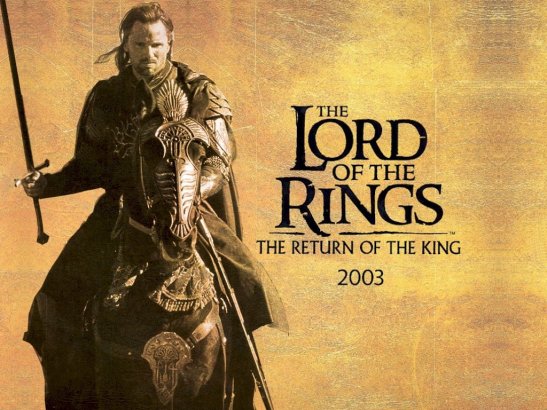
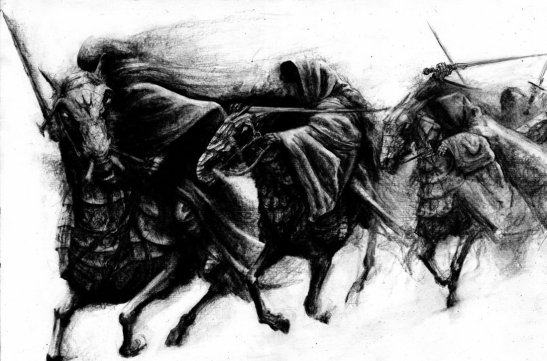
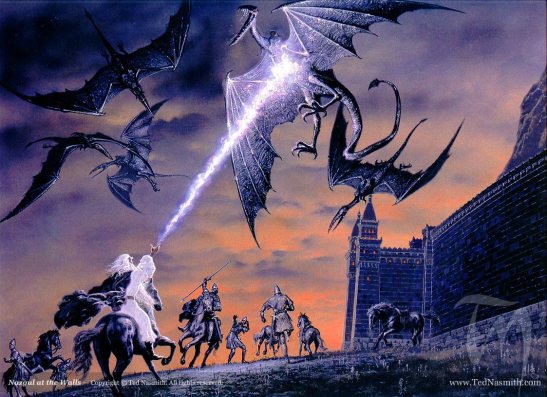
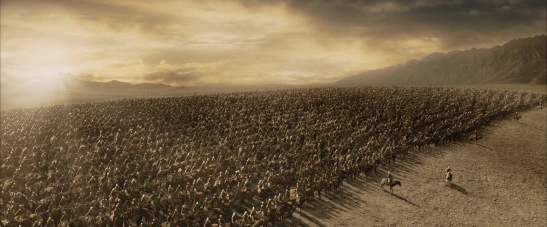
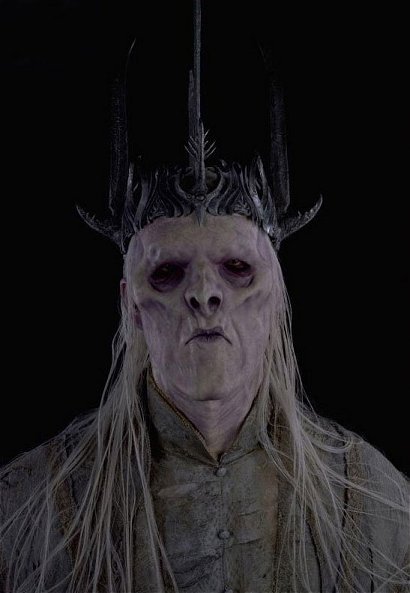
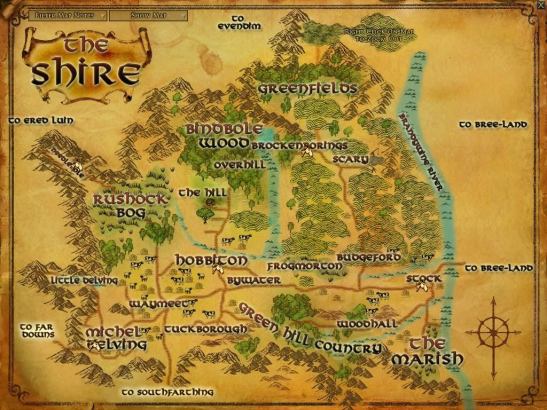

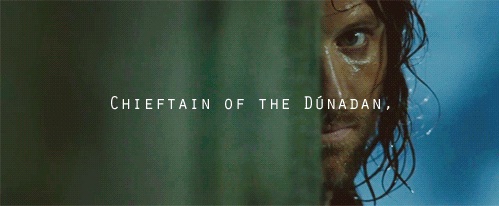
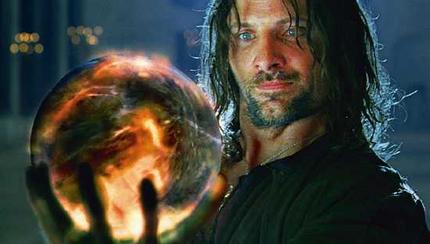
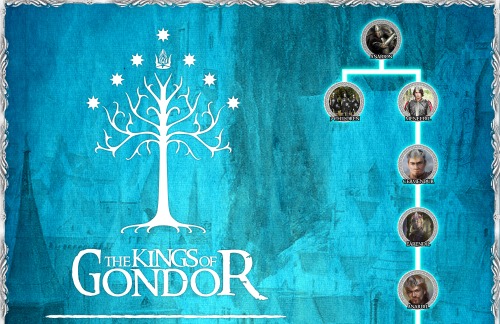
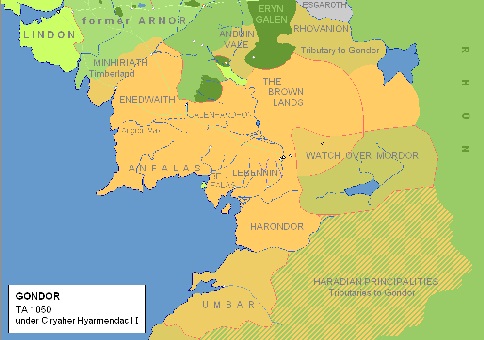
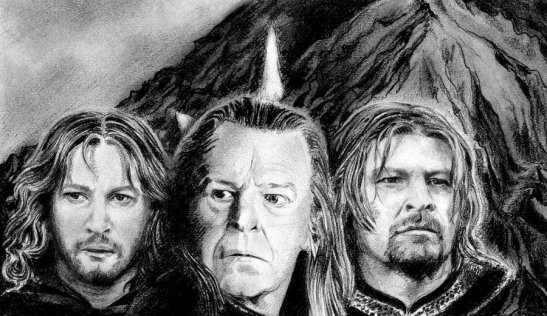
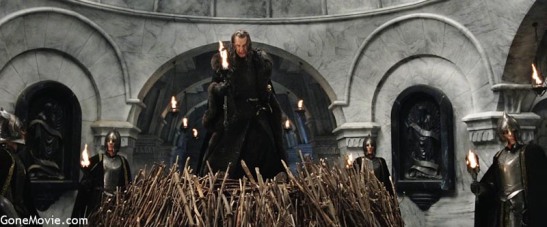
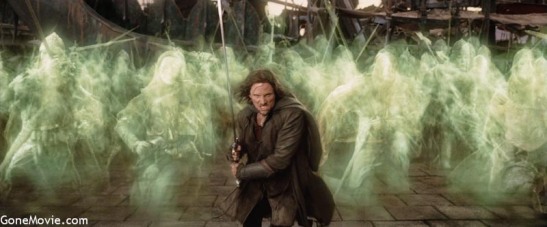
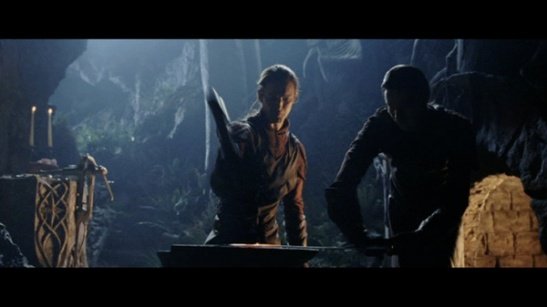
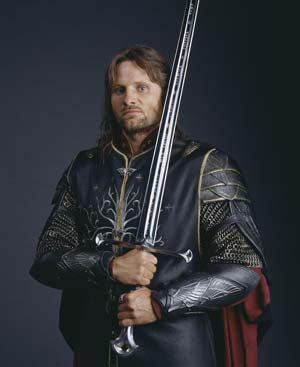

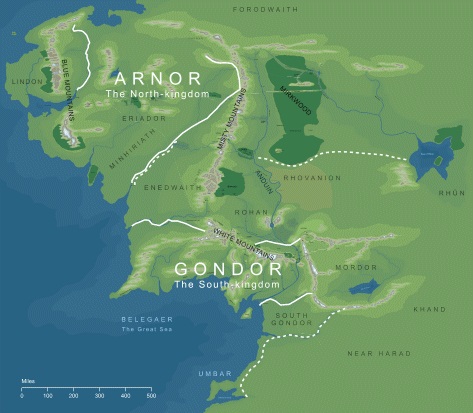
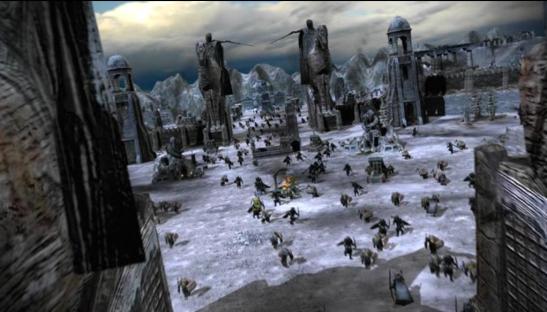
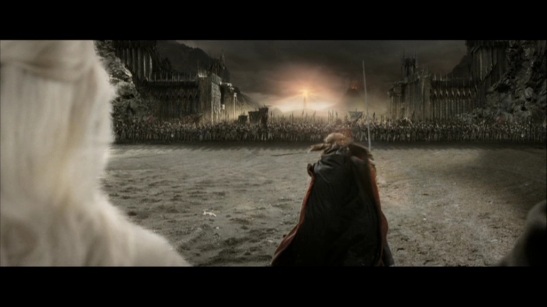
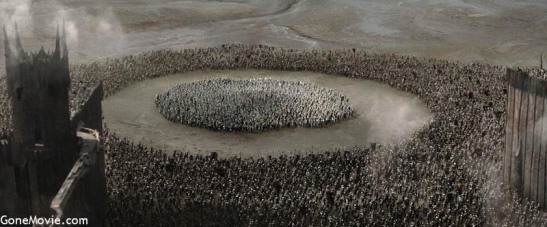
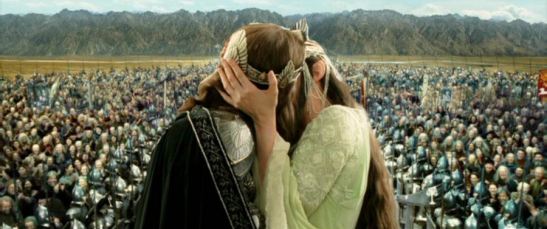
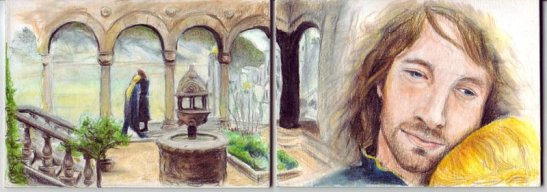
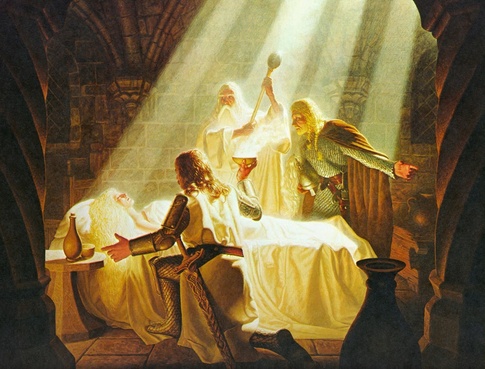
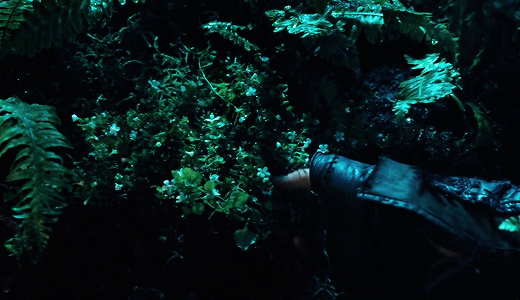
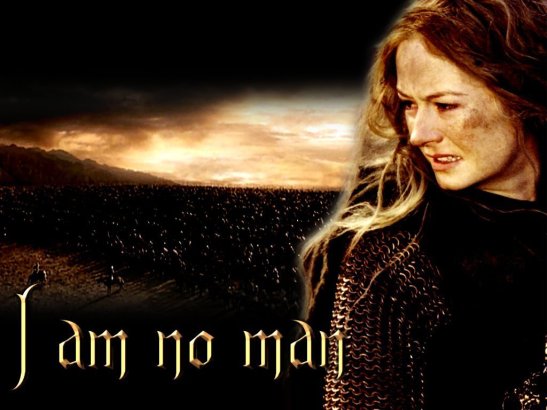
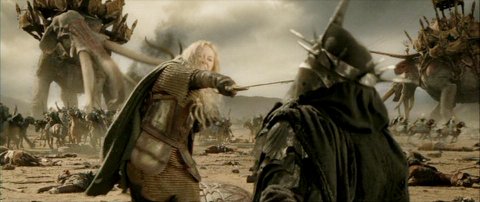
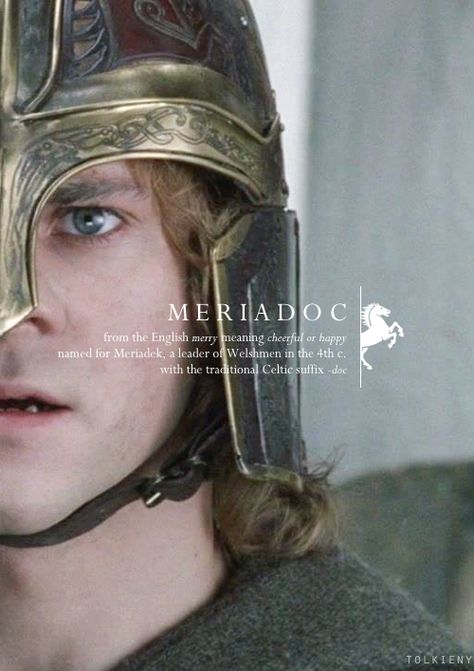
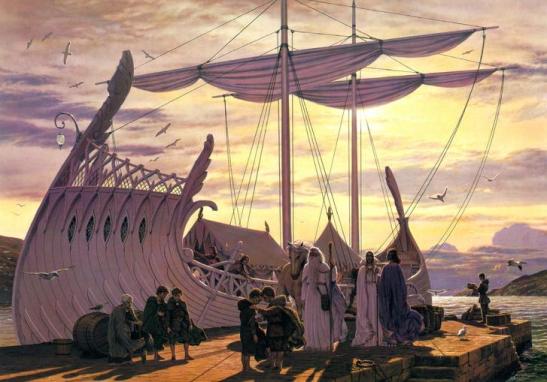
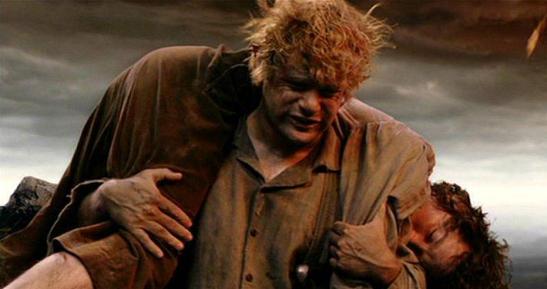
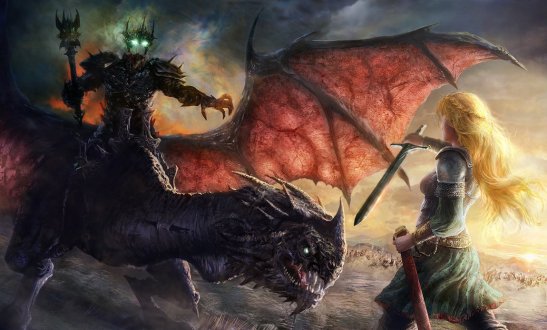

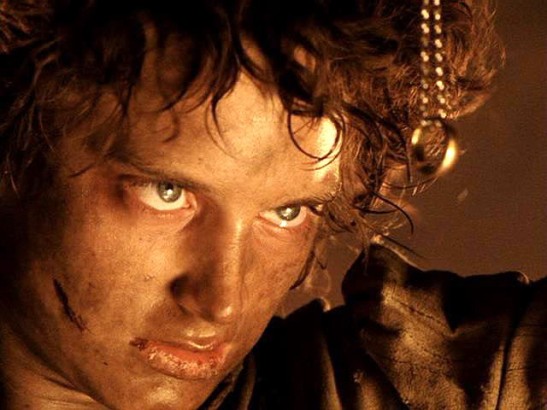
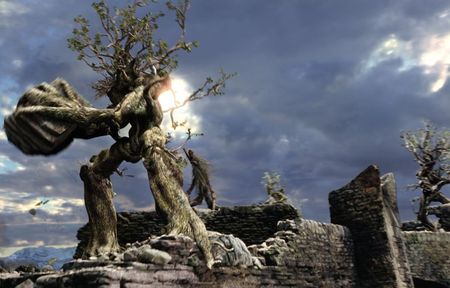
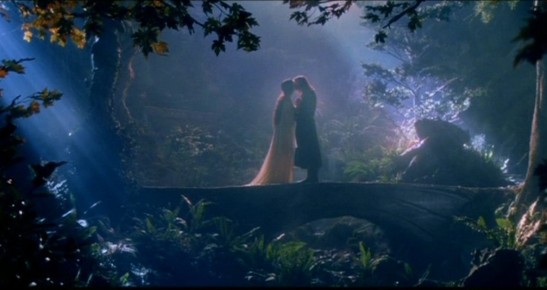
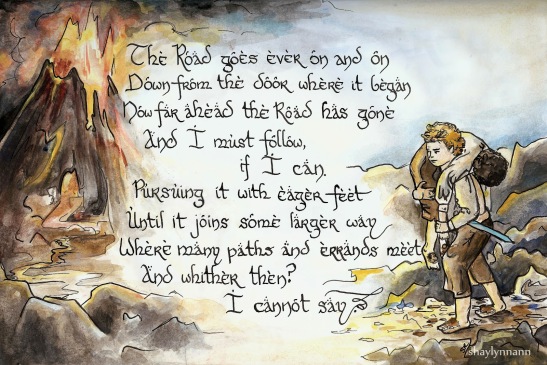
Hey just wanted to give you a quick heads up. The words in your post seem to be running off the screen in Ie. I’m not sure if this is a format issue or something to do with internet browser compatibility but I figured I’d post to let you know. The design look great though! Hope you get the problem solved soon. Cheers